A monochromatic living room design uses varying tones, shades, and tints of a single color to create a sophisticated and harmonious space. This approach is not about making a room boring or one-dimensional; instead, it’s a masterful exercise in layering and texture to build visual interest. By focusing on one color family, you can achieve a cohesive look that feels both intentional and calming. From soft, airy whites to deep, dramatic charcoals, a monochromatic palette provides a versatile foundation for any style, allowing architectural details and carefully chosen decor to stand out with understated elegance and timeless appeal.
1. All-White Monochromatic Living Room
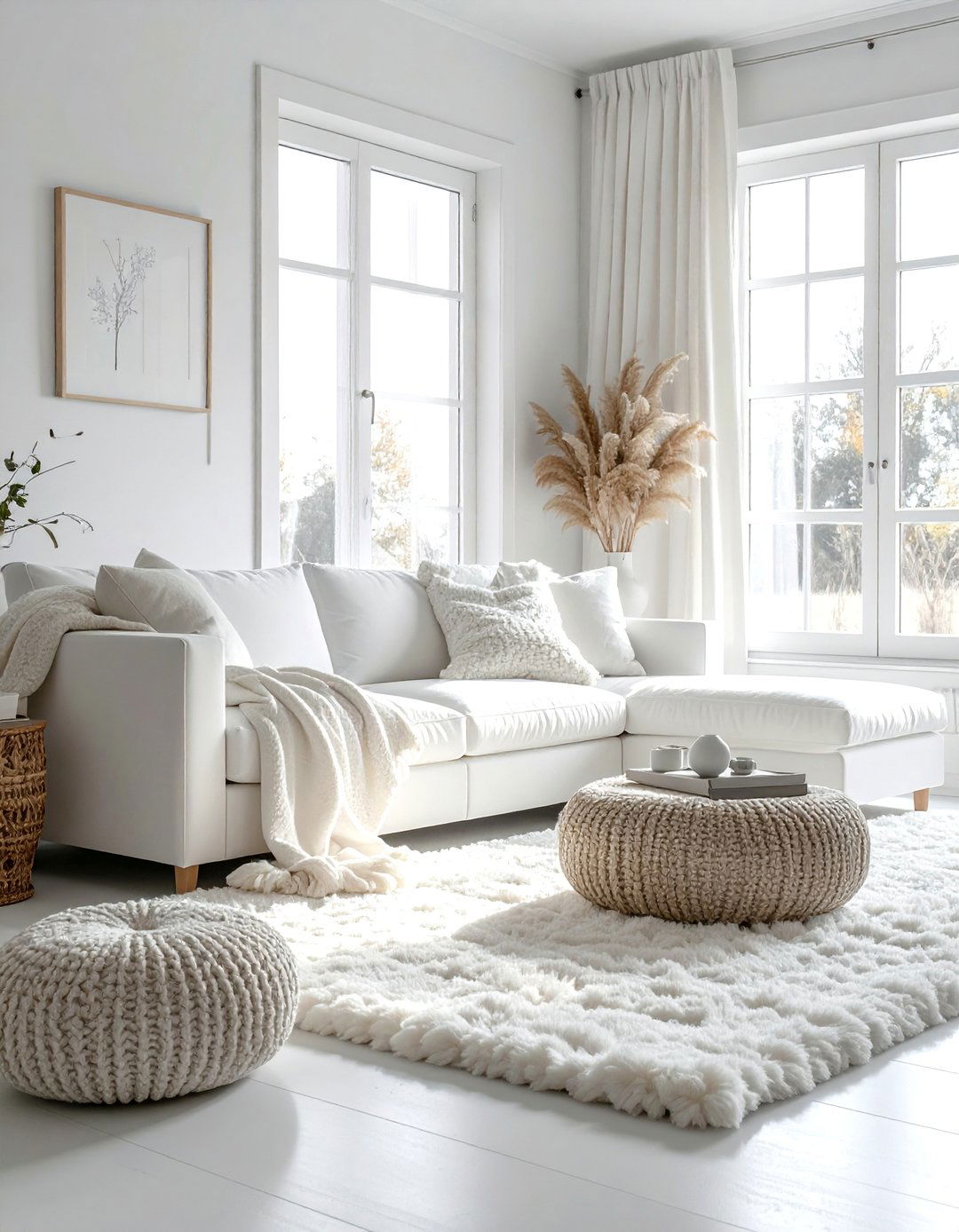
An all-white monochromatic living room creates an atmosphere of serenity and spaciousness. This design relies on layering different shades of white, from crisp optic white to softer ivory and cream, to avoid a sterile feel. To add depth, incorporate a variety of textures: a plush wool rug, a linen-upholstered sofa, chunky knit throws, and ceramic vases. The subtle variations in tone and texture prevent the space from feeling flat, instead creating a rich, inviting environment that is both airy and sophisticated. Natural light plays a crucial role, enhancing the nuances of each white shade and making the room feel open and bright.
2. Shades of Gray Monochromatic Living Room
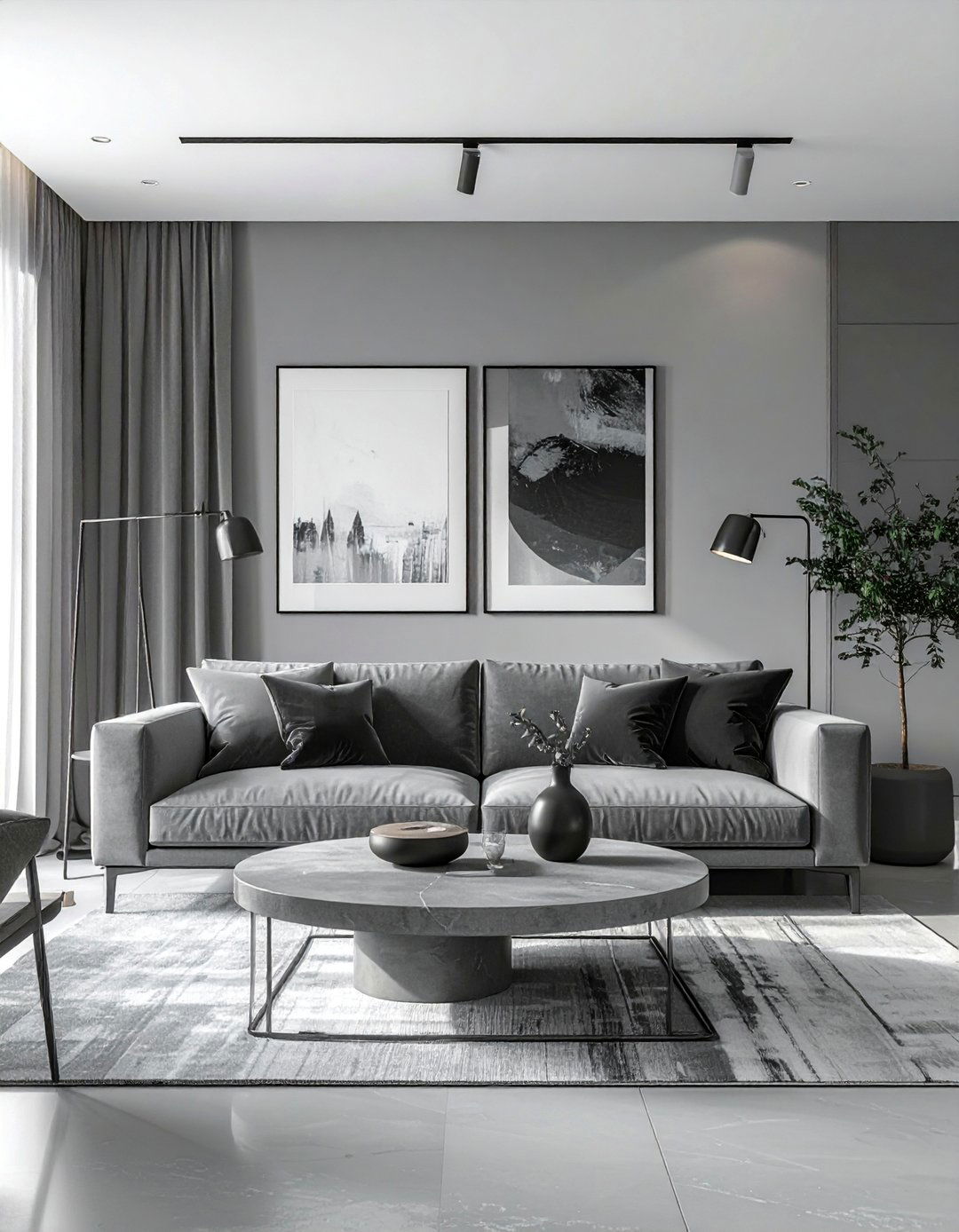
Utilizing various shades of gray in a monochromatic living room offers a timeless and versatile backdrop. This palette can range from soft, pale dove gray to deep, moody charcoal. For a balanced look, combine these tones across different elements. Consider a medium-gray sofa, lighter gray walls, and a dark charcoal area rug to anchor the space. Introducing different materials like a concrete coffee table, brushed metal lamps, and velvet cushions adds tactile interest. This layered approach to gray creates a sophisticated and contemporary aesthetic that feels both calming and dynamic, suitable for modern and traditional homes alike.
3. Layered Beige Monochromatic Living Room
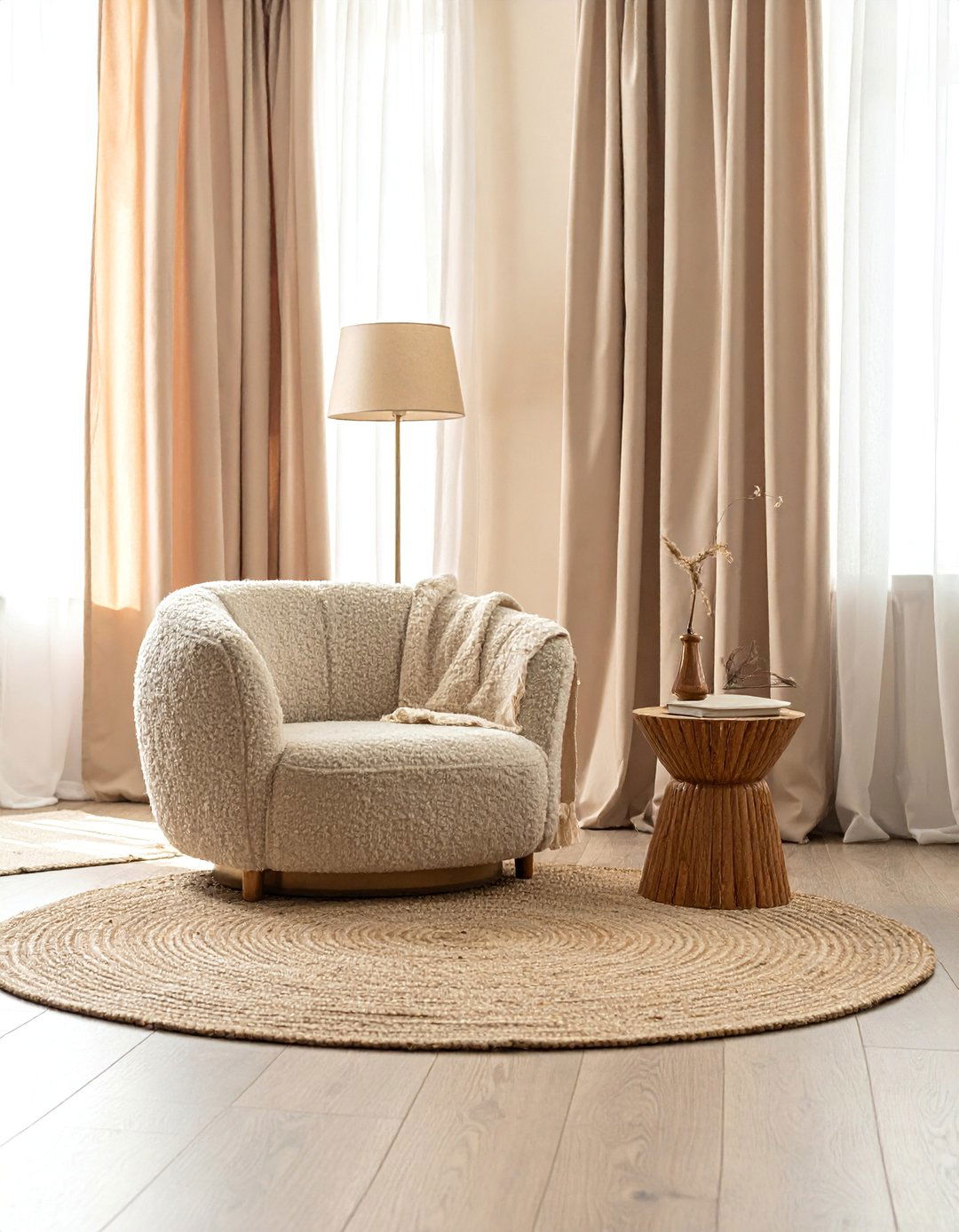
A layered beige monochromatic living room exudes warmth and understated elegance. The key is to blend multiple shades, from sandy beige and camel to creamy off-white and taupe, to build a rich, cohesive look. Introduce diverse textures to prevent the space from appearing bland. Think of a nubby bouclé armchair, a smooth leather ottoman, a jute rug, and silk curtains. These materials catch the light differently, highlighting the subtle variations in the beige palette. This design creates a serene and inviting sanctuary that feels both comfortable and effortlessly chic, proving that a neutral scheme can be full of depth and character.
4. Deep Navy Blue Monochromatic Living Room
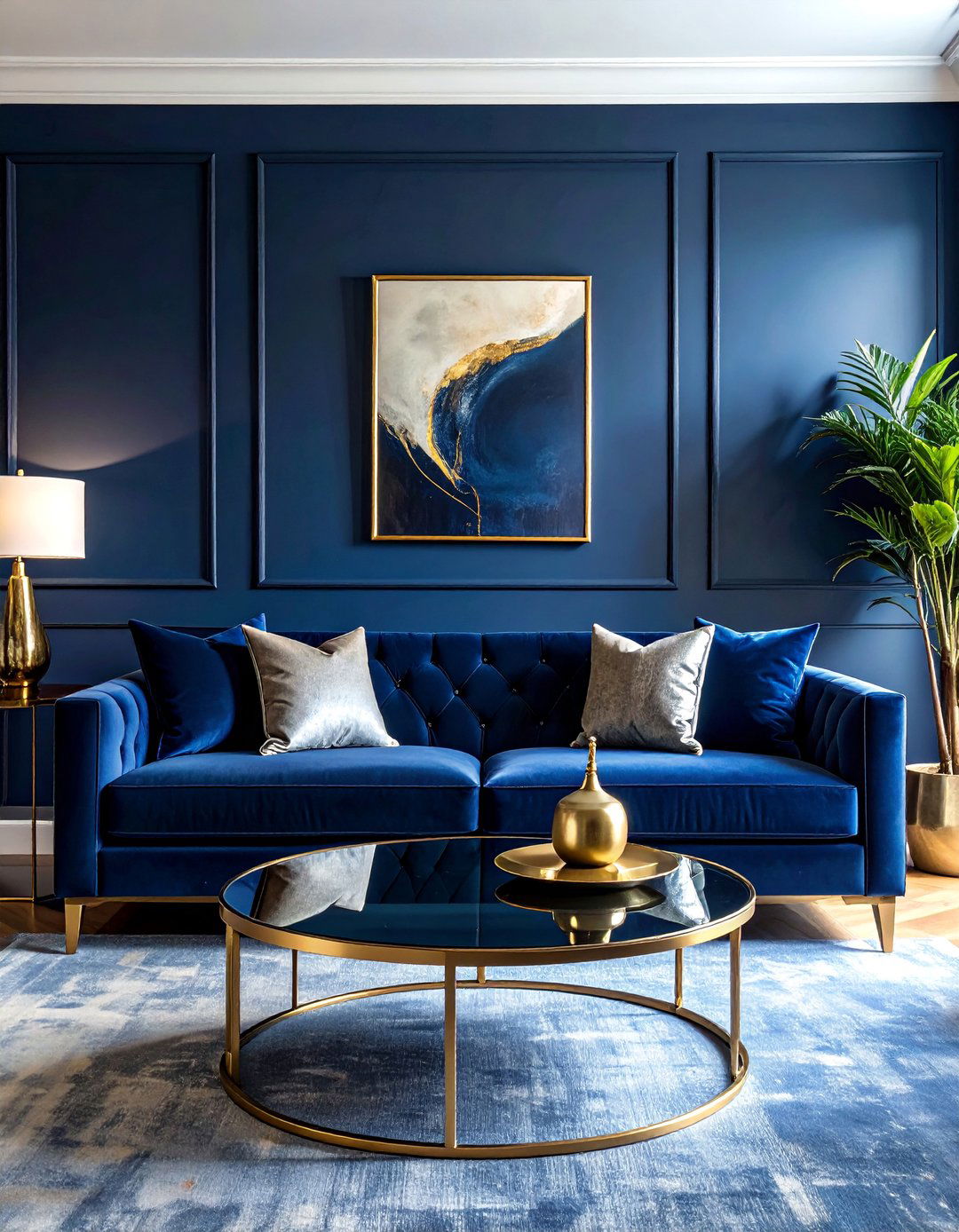
For a bold and dramatic statement, a deep navy blue monochromatic living room is an excellent choice. This design envelops the space in a sense of cozy sophistication. To make it work, use varying tones of navy, from inky dark shades on the walls to slightly lighter blues for the sofa and textiles. To prevent the room from feeling too dark, ensure ample lighting, both natural and artificial. Incorporating reflective surfaces like a glass coffee table or metallic accents in brass or silver can help bounce light around. Layering textures such as velvet, wool, and linen adds dimension, creating a luxurious and enveloping retreat.
5. Earthy Brown Monochromatic Living Room
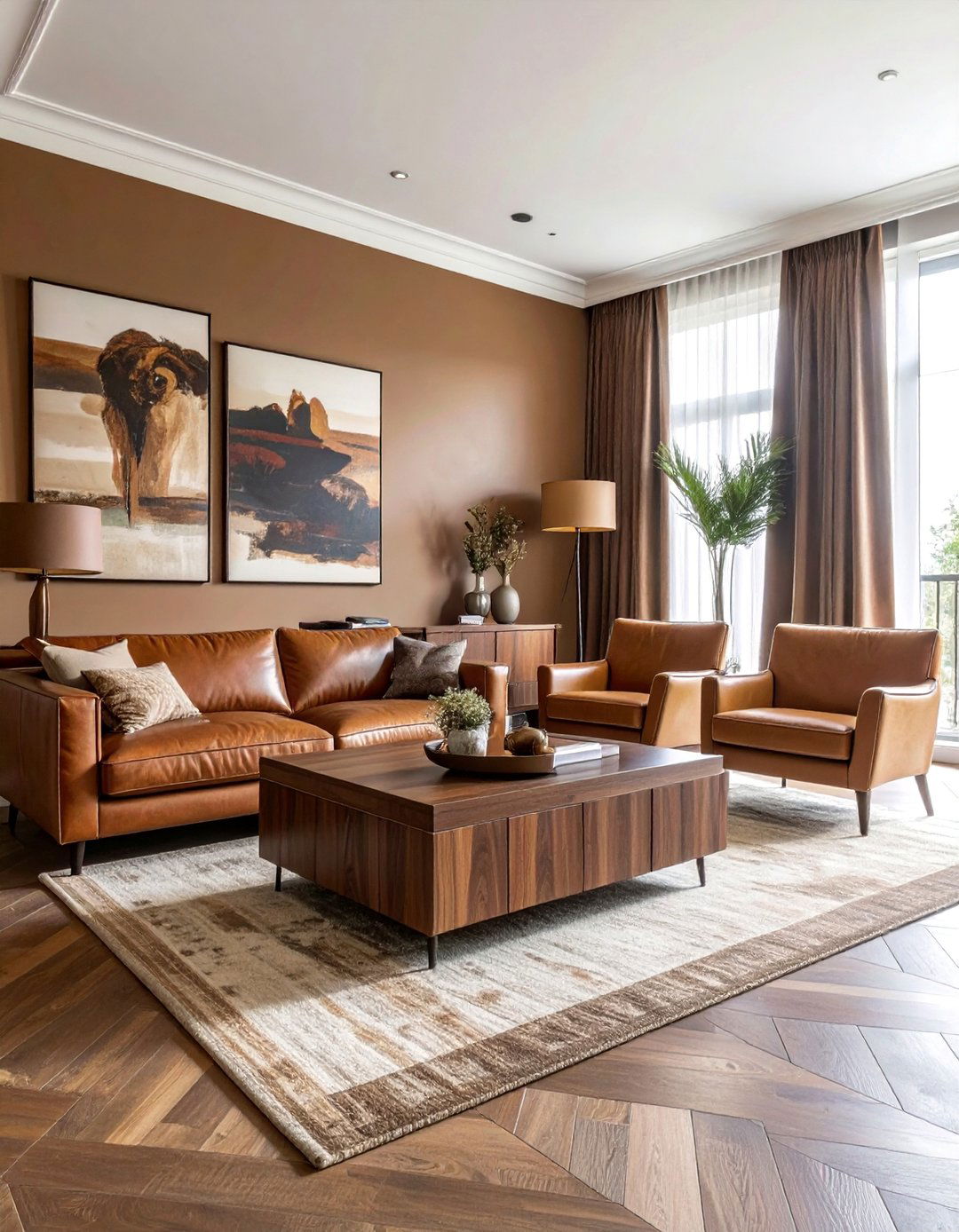
An earthy brown monochromatic living room creates a warm, grounding, and comfortable atmosphere. This scheme draws from a rich palette of chocolate, espresso, tan, and caramel tones. To achieve a cohesive look, layer these shades across furniture, textiles, and decor. Imagine a deep chocolate brown leather sofa paired with lighter tan armchairs and a multi-toned brown rug. Introducing natural materials like wood, rattan, and stone further enhances the earthy vibe. This design fosters a sense of connection to nature, resulting in a stable and inviting space that feels both rustic and refined, perfect for relaxation and unwinding after a long day.
6. Soft Pink Monochromatic Living Room
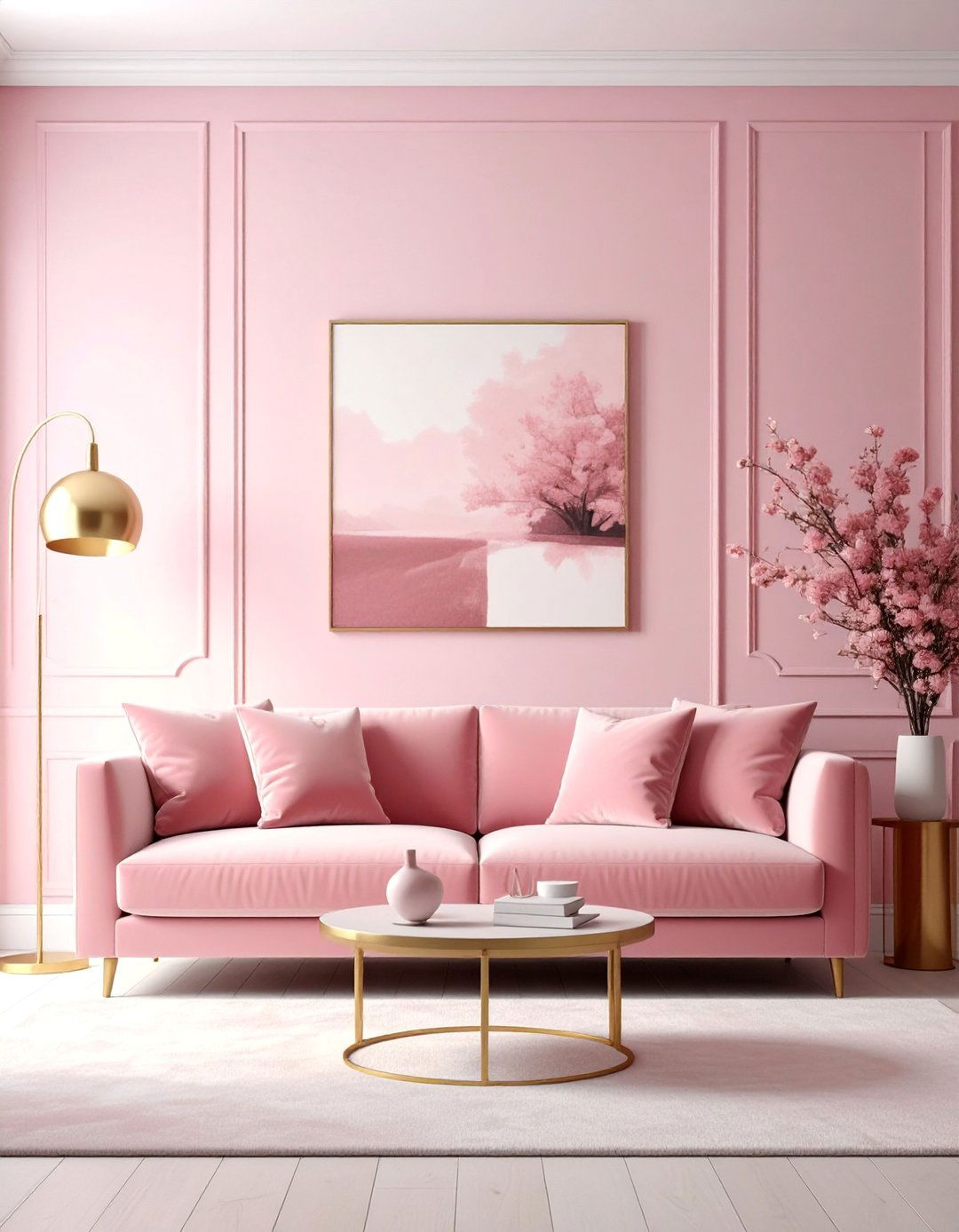
A soft pink monochromatic living room offers a chic and contemporary take on a traditionally sweet color. By using a sophisticated palette of dusty rose, blush, and muted terracotta, the design feels grown-up and serene rather than juvenile. Layering is essential: combine a blush pink sofa with rose-toned cushions and a slightly deeper pink rug. Textural variety through velvet, linen, and faux fur adds depth and prevents the scheme from feeling one-note. Accents in warm metallics like brushed gold or copper complement the pink tones beautifully, adding a touch of glamour to the gentle, welcoming, and stylishly modern living space.
7. Sage Green Monochromatic Living room
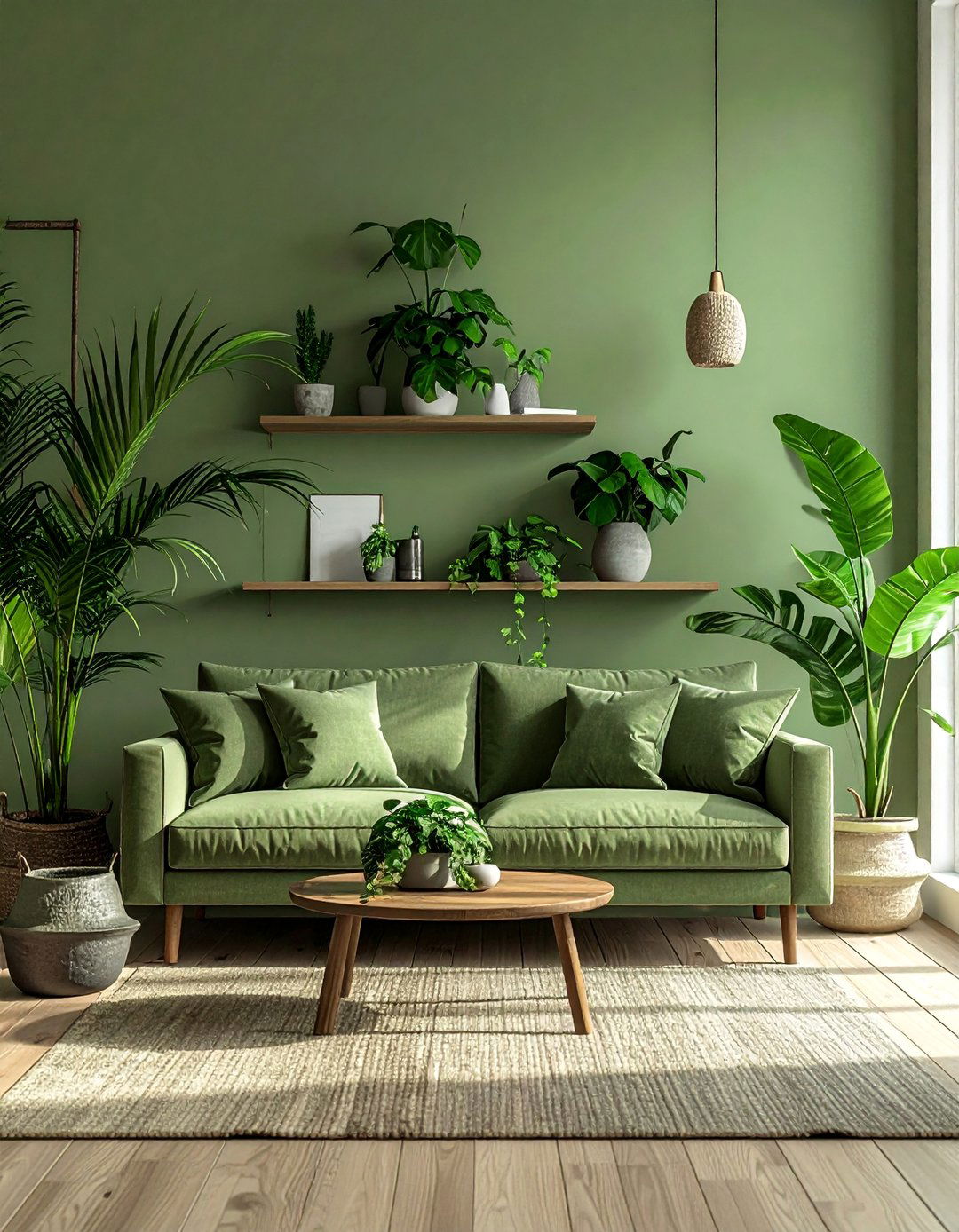
Creating a sage green monochromatic living room brings the calming essence of nature indoors. This design uses various shades of soft, muted green to establish a tranquil and restorative environment. To build depth, paint the walls in a light sage, choose a sofa in a slightly deeper olive-green, and accessorize with pillows and throws in even richer mossy tones. The key is to incorporate different textures—a linen couch, a wool rug, and ceramic planters—to add visual interest. Natural wood elements and botanical prints complement the green palette, enhancing the organic feel and creating a peaceful haven that promotes relaxation and well-being.
8. Charcoal Gray Monochromatic Living Room
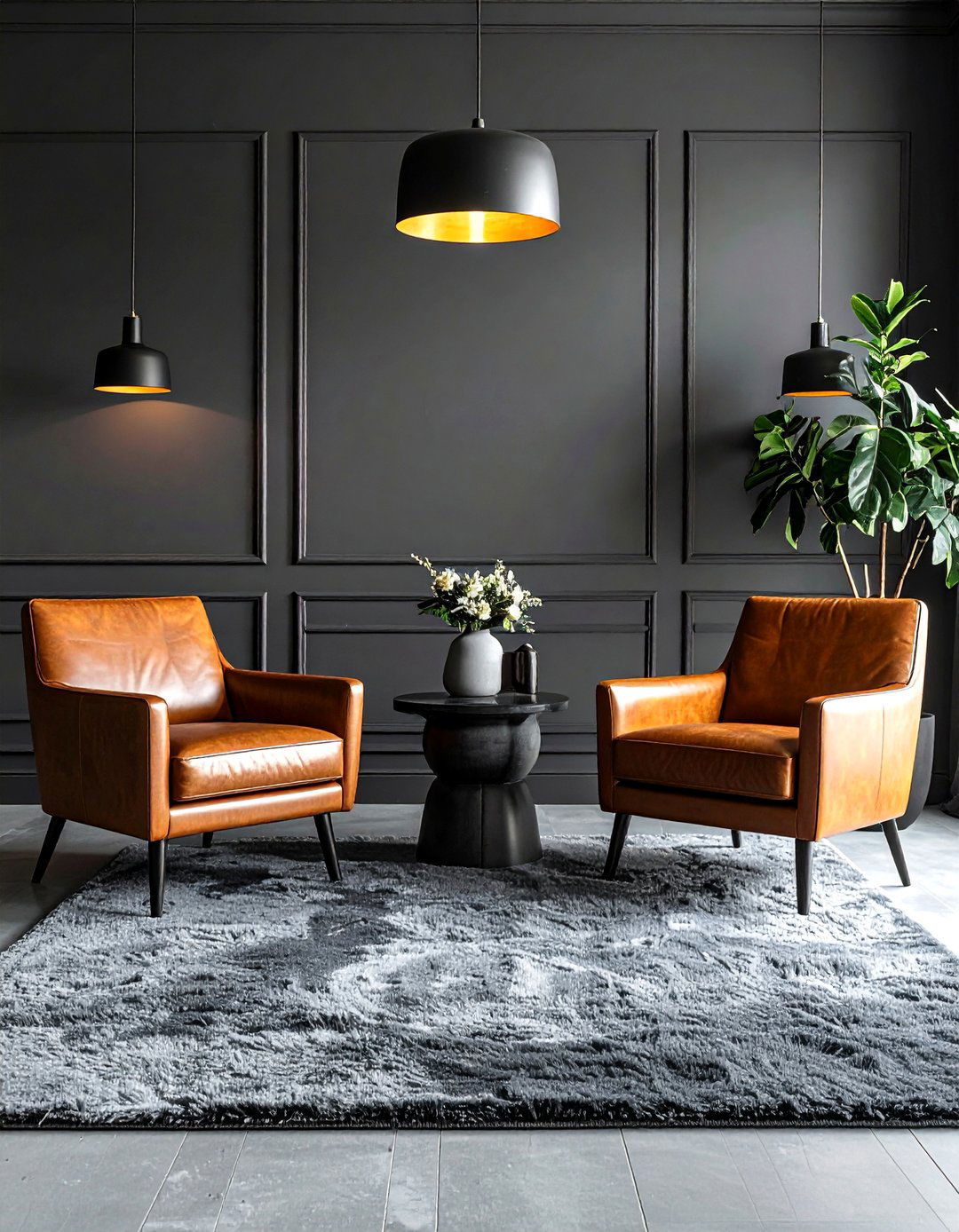
A charcoal gray monochromatic living room delivers a powerful, sophisticated, and modern aesthetic. This dramatic choice works by layering different depths of charcoal to create a moody yet inviting atmosphere. Use a deep charcoal on the walls as a bold backdrop for a slightly lighter gray sofa. Incorporate texture with a high-pile rug, leather armchairs, and metal accents to break up the intensity of the color. Proper lighting is essential to highlight the different tones and prevent the room from feeling too enclosed. The result is a sleek, contemporary space that feels both intimate and luxurious, perfect for making a confident design statement.
9. Cream and Ivory Monochromatic Living Room
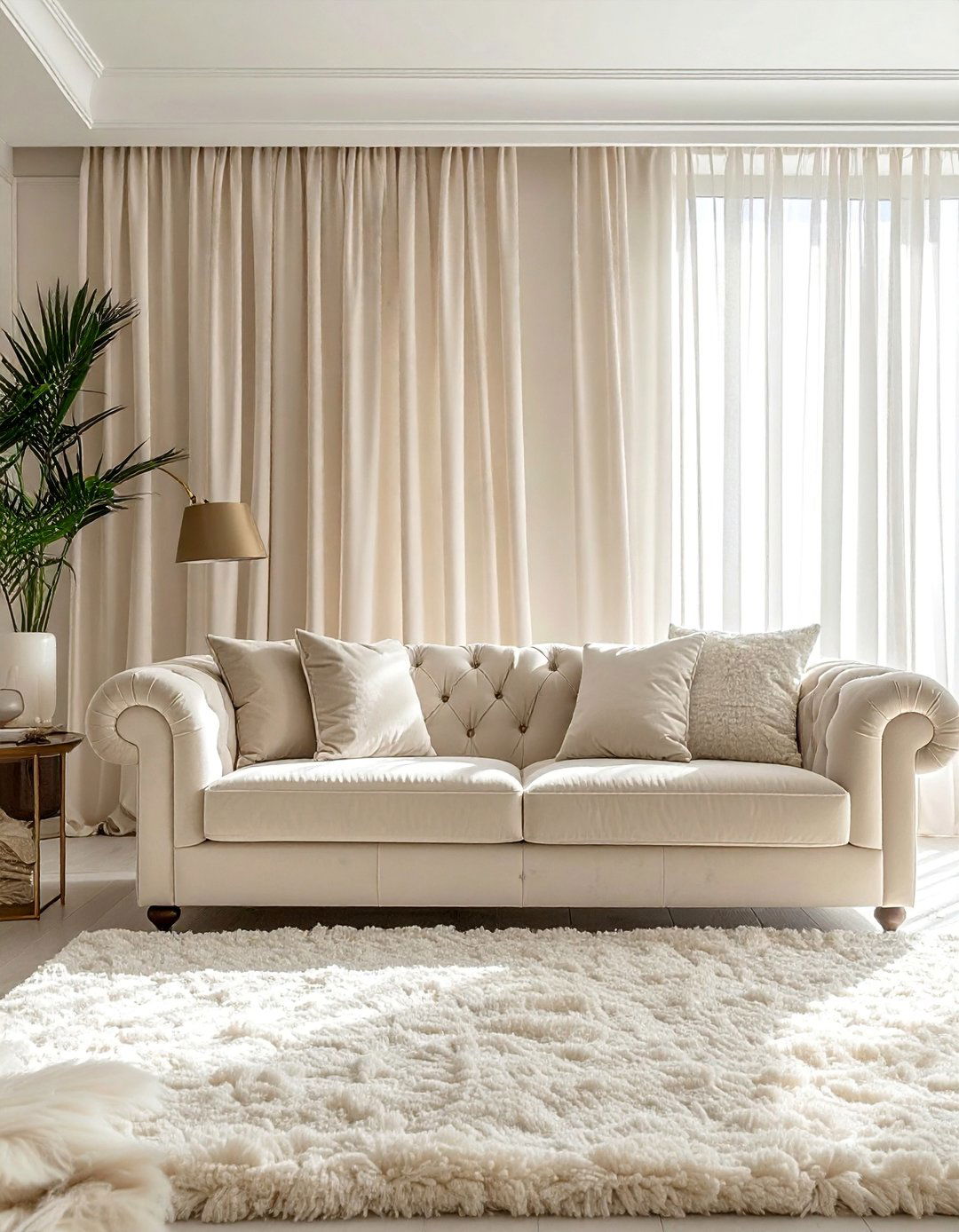
A cream and ivory monochromatic living room is the epitome of timeless elegance and warmth. This subtle palette combines soft, off-white tones to create a space that feels bright, airy, and incredibly inviting. The success of this design lies in the masterful use of texture. Combine a creamy bouclé sofa with ivory silk curtains, a plush high-pile rug, and raw linen pillows. These different surfaces interact with light to create subtle shadows and highlights, adding depth to the room. Accents of light-toned wood or brushed brass can introduce additional warmth without disrupting the serene, cohesive, and sophisticated monochromatic look.
10. Taupe Monochromatic Living Room
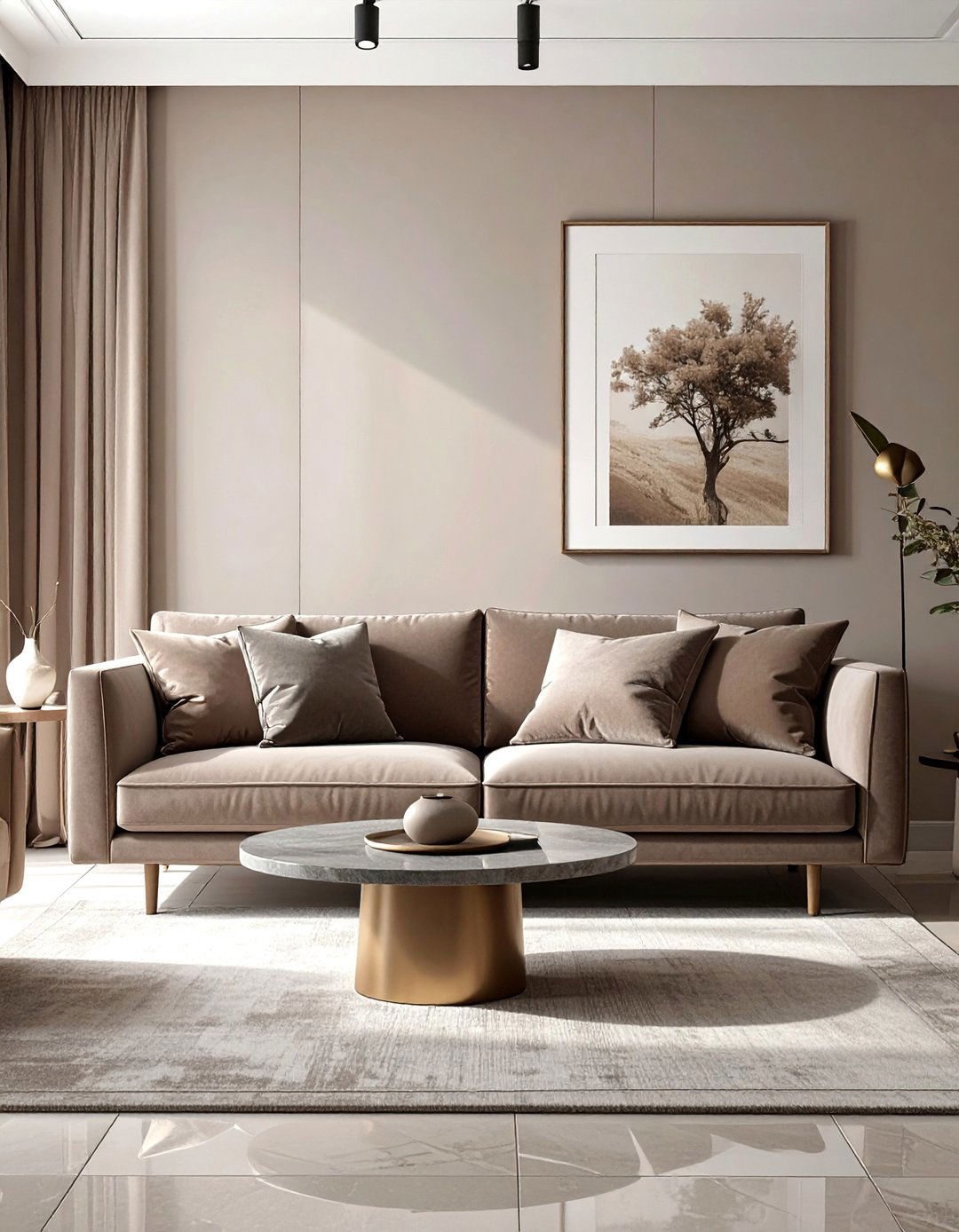
A taupe monochromatic living room strikes the perfect balance between the warmth of brown and the coolness of gray. This versatile neutral creates a sophisticated and calming backdrop that feels both modern and timeless. To design this space, layer various shades of taupe, from pale, almost-beige tones to deeper, richer hues. Combine a sleek taupe sofa with walls in a lighter shade and introduce textures like suede, wool, and polished stone to add dimension. This palette pairs beautifully with both black and metallic accents, allowing for personalization. The result is an elegant, understated room that feels cohesive, balanced, and effortlessly chic.
11. Terracotta Monochromatic Living Room
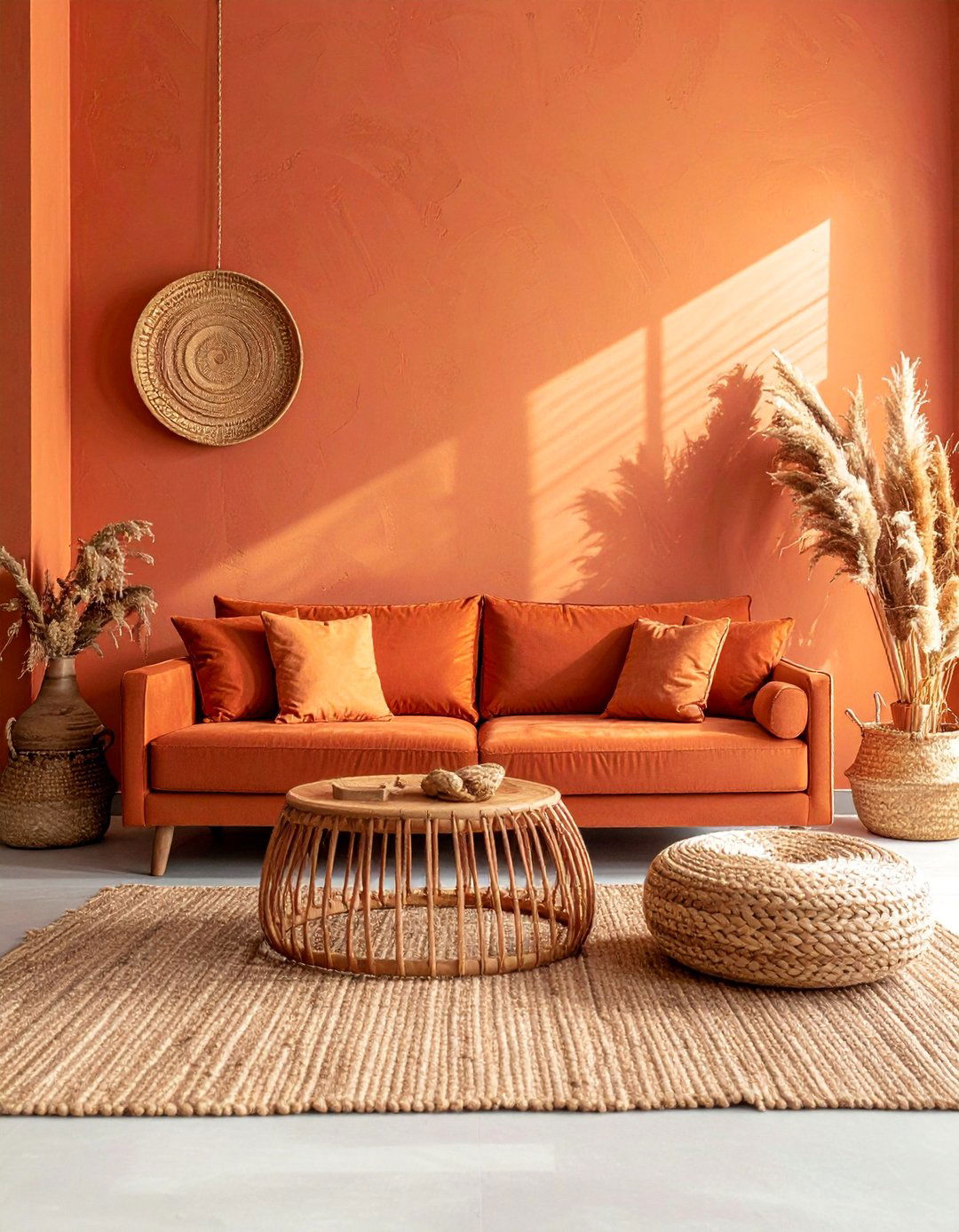
A terracotta monochromatic living room infuses a space with earthy warmth and a touch of bohemian flair. This design uses a spectrum of burnt orange, clay, and rust tones to create a cozy and inviting atmosphere. Layer these hues through paint, textiles, and decor. Consider a feature wall in a deep terracotta shade, paired with a sofa in a softer apricot hue. Textures are key to adding depth; incorporate materials like rattan, raw linen, and handmade ceramics. This color scheme connects the room to natural elements, fostering a grounded and welcoming environment that is rich in character and radiates a comfortable, sun-baked appeal.
12. Greige Monochromatic Living Room
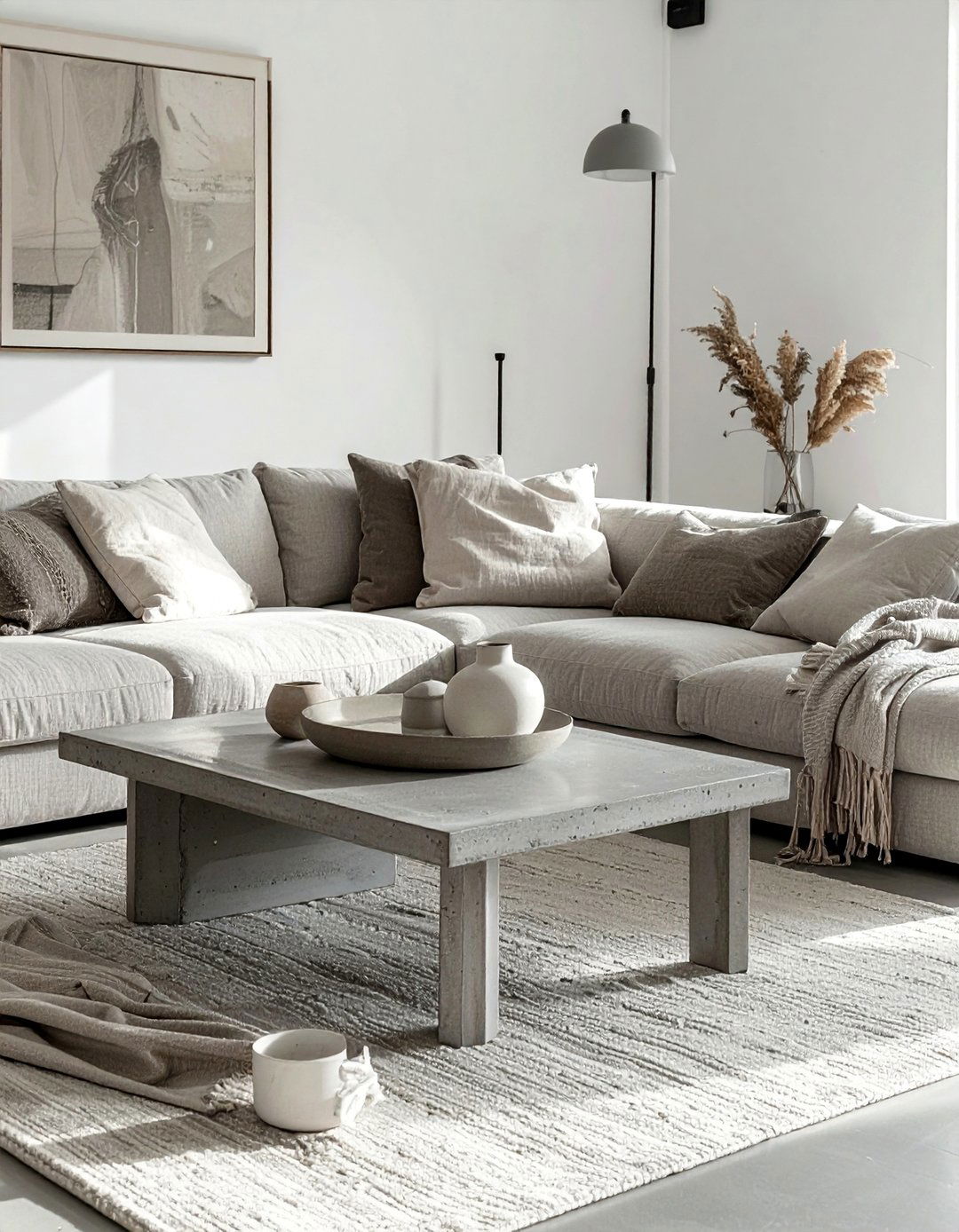
A greige monochromatic living room combines the best of gray and beige to create a sophisticated and highly versatile neutral space. This complex color has warm undertones that prevent it from feeling cold, making it perfect for an inviting atmosphere. Build the room by layering different shades of greige, from light and airy on the walls to a deeper tone for the sofa or rug. To add interest, focus on texture: a nubby linen sectional, a smooth concrete coffee table, and soft cashmere throws. This subtle palette creates a calm and harmonious environment that feels both contemporary and classic, offering a perfect canvas for any decor style.
13. Monochromatic Living Room with Natural Wood
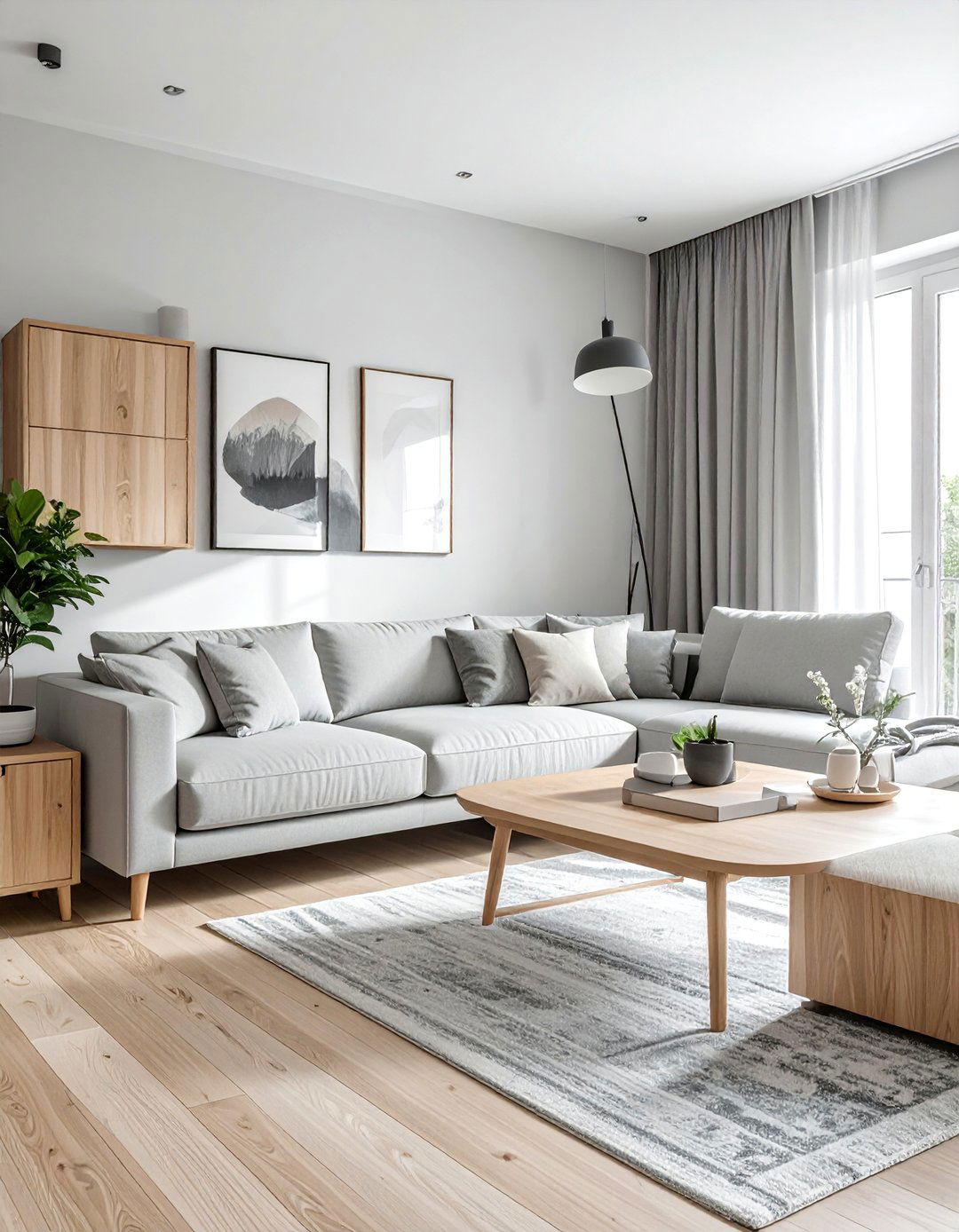
Incorporating natural wood elements into a monochromatic living room adds warmth, texture, and an organic touch. Whether your chosen color is white, gray, or beige, wood acts as a complementary neutral that enhances the design without breaking the single-color rule. Consider a light oak coffee table in an all-white room or a dark walnut media console in a charcoal gray space. The wood grain introduces a natural pattern, adding visual interest and preventing the room from feeling flat. This combination creates a balanced and harmonious environment that feels both sophisticated and grounded, blending modern minimalism with natural beauty.
14. Monochromatic Living Room with Metallic Accents
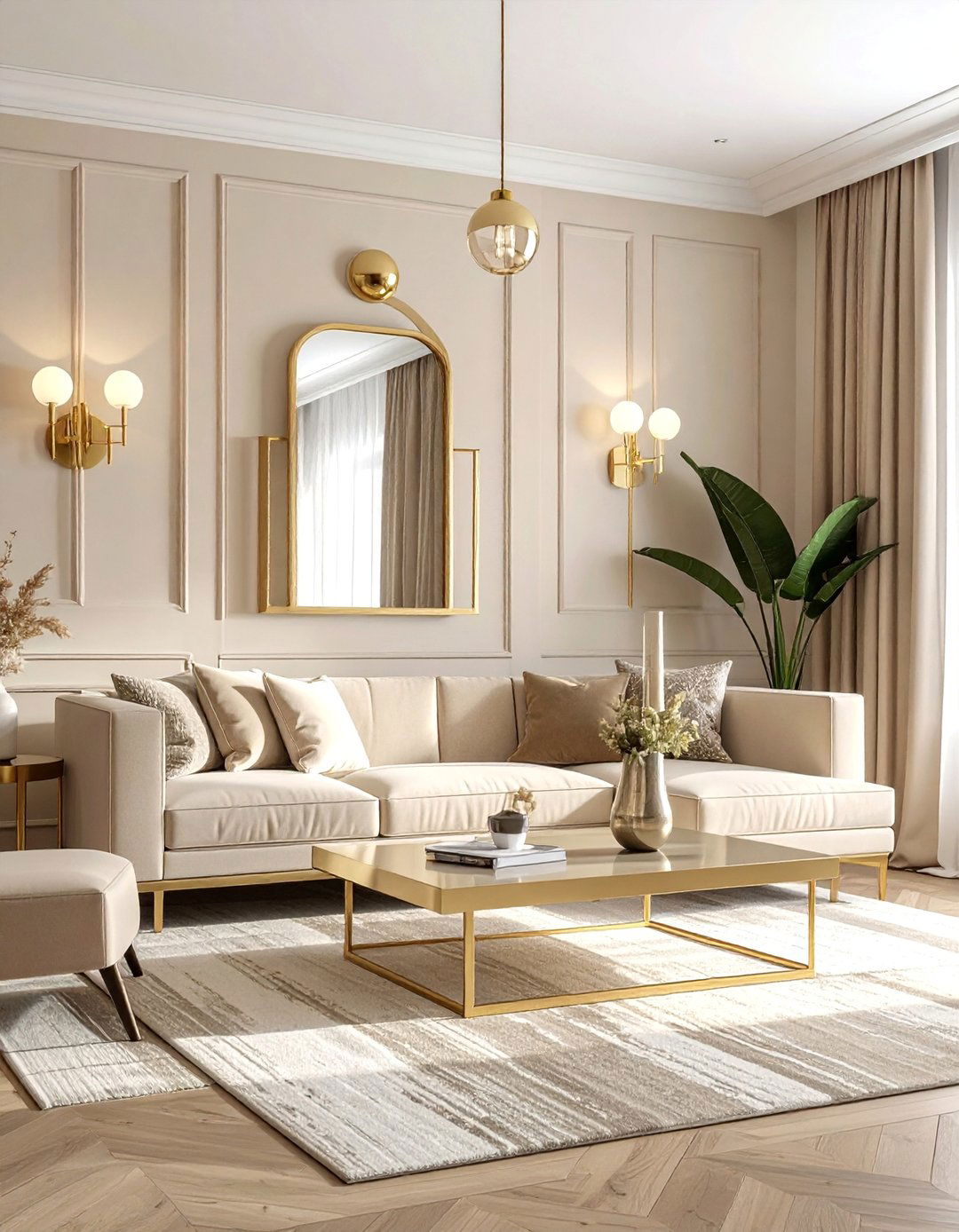
Introducing metallic accents into a monochromatic living room is an excellent way to add glamour and visual contrast. In a gray room, brushed silver or chrome details on light fixtures and table legs can create a sleek, modern look. For warmer palettes like beige or cream, brushed brass or gold accents provide a touch of luxury and warmth. These reflective surfaces catch the light, adding sparkle and dimension that prevents the single-color scheme from feeling monotonous. Even small touches, such as a metallic-framed mirror or decorative objects, can elevate the entire space, making it feel more dynamic and polished.
15. Minimalist Monochromatic Living Room
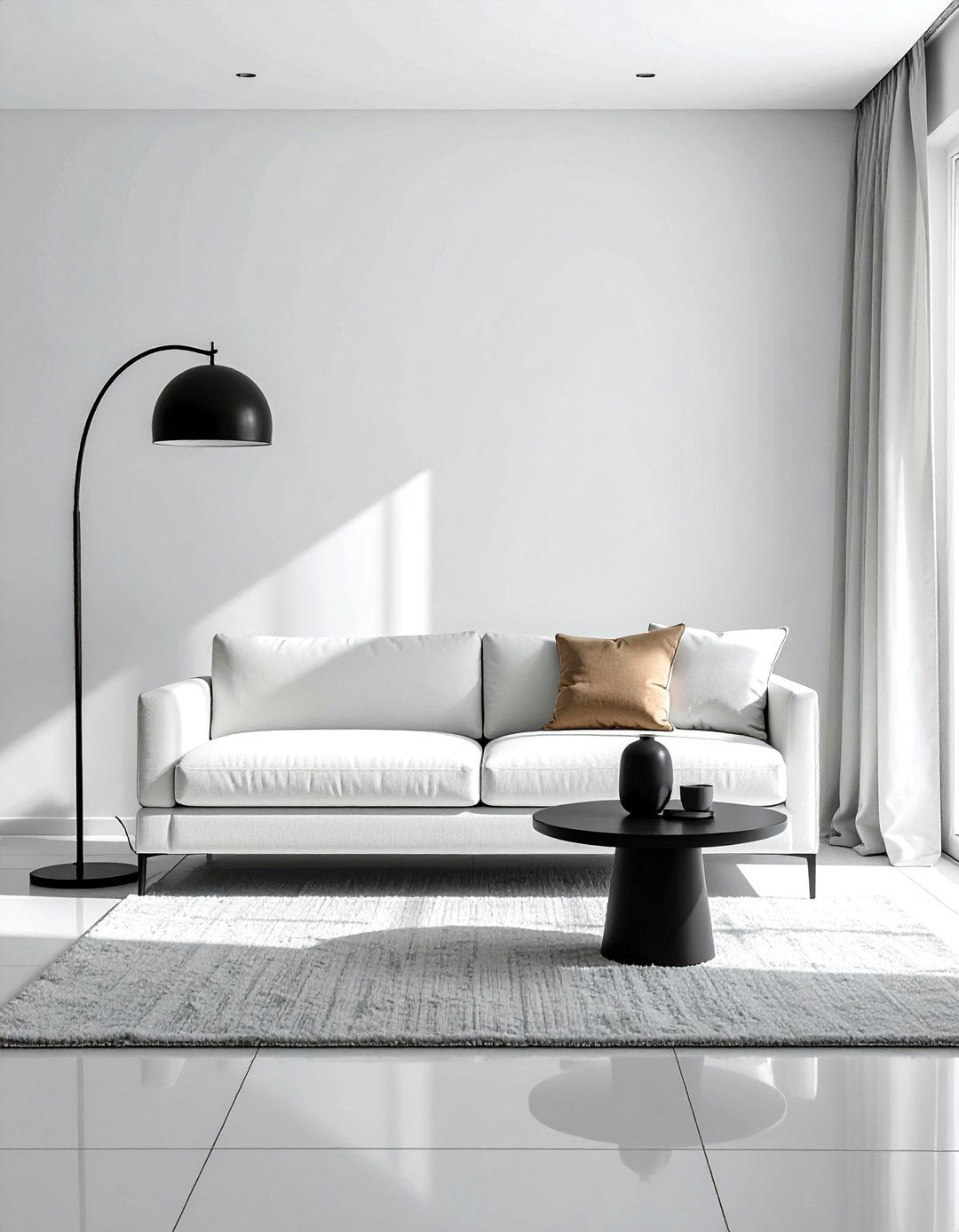
A minimalist monochromatic living room embodies the "less is more" philosophy, focusing on clean lines, uncluttered surfaces, and a single color palette. This design often uses shades of white, gray, or black to create a serene and highly ordered space. The key is to select a few high-quality furniture pieces with simple silhouettes and let them be the focus. Texture plays a subtle but important role; a smooth leather sofa or a low-pile wool rug can add depth without adding clutter. This approach results in a calm, breathable environment where every object has a purpose, creating a sophisticated and tranquil retreat from visual noise.
16. Monochromatic Living Room with Textural Variety
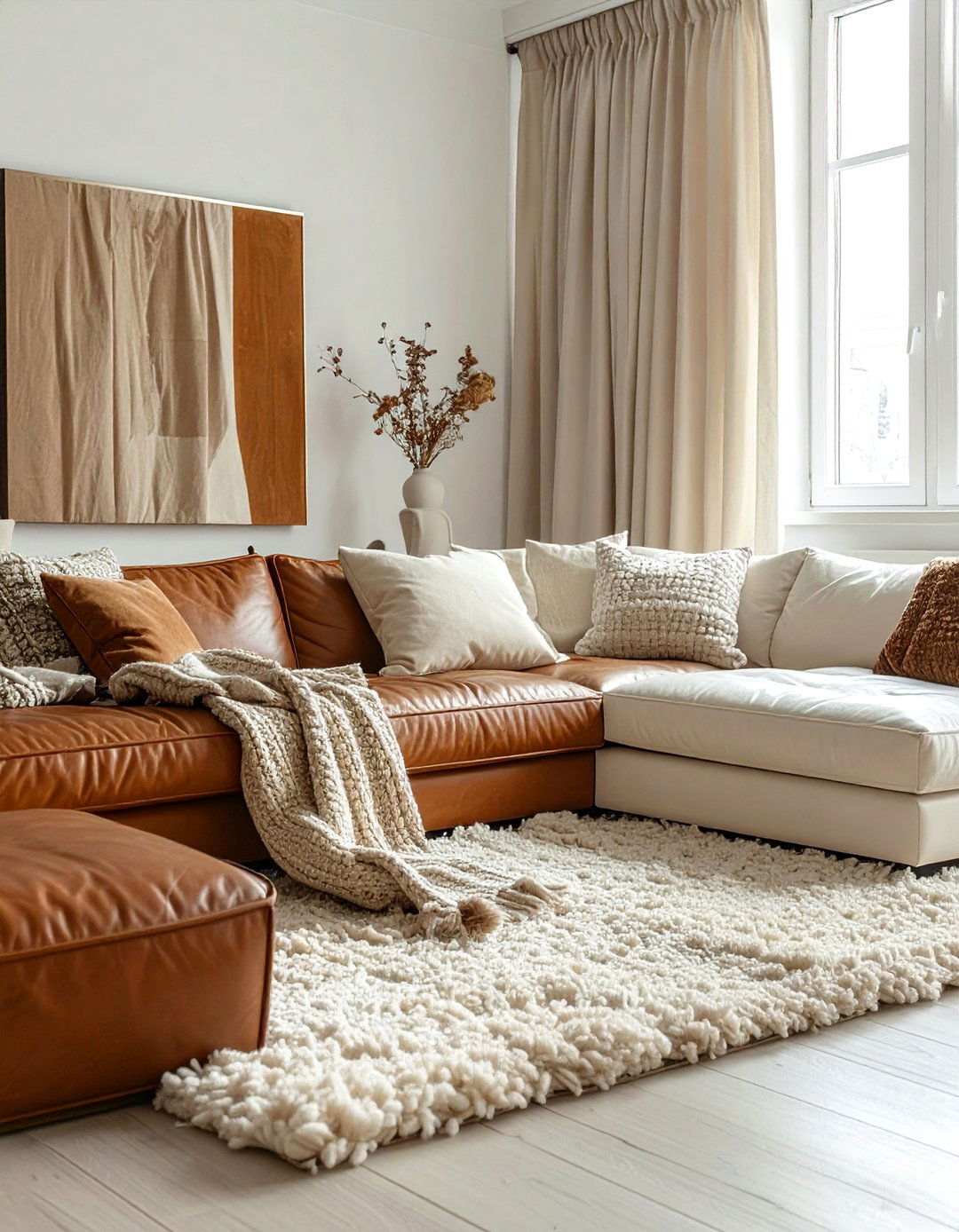
The secret to a successful monochromatic living room is an abundance of textural variety. When working with a single color, different materials are essential for creating depth, interest, and a sense of coziness. Imagine a living room where a smooth leather sofa sits on a chunky wool rug, complemented by velvet cushions, a raw silk throw, and linen curtains. Each material reflects light differently and provides a unique tactile experience, preventing the space from feeling flat or uninspired. By layering these textures, you build a rich, multi-dimensional environment that is visually engaging and incredibly inviting, all while maintaining a cohesive color story.
17. High-Contrast Monochromatic Living Room
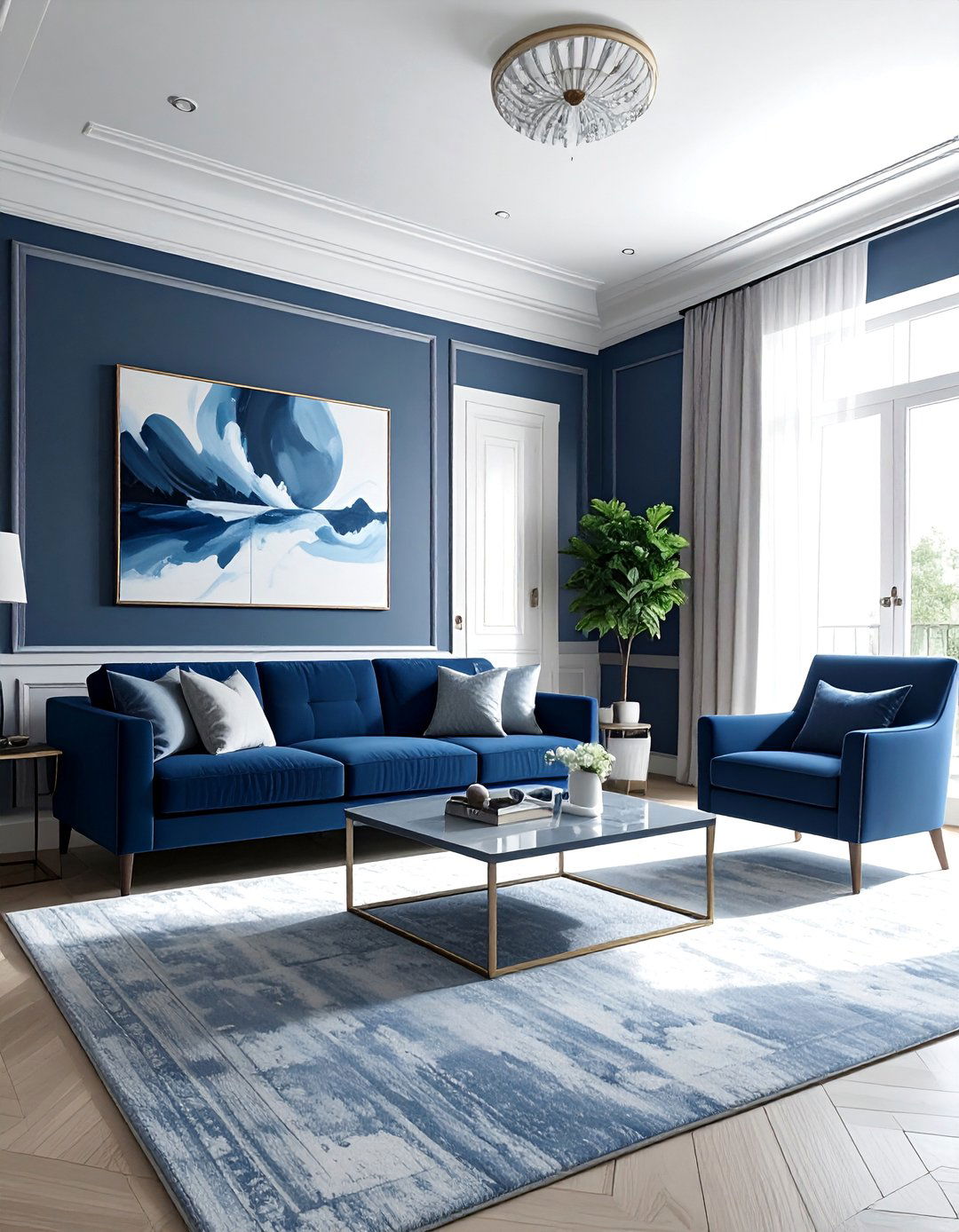
A high-contrast monochromatic living room uses the lightest and darkest shades of a single color to create a bold, dynamic, and visually striking space. While often associated with black and white, this concept can be applied to any color. For example, in a navy blue room, you could pair deep, inky walls with a pale, sky-blue sofa and crisp white trim. This dramatic interplay of light and dark tones adds depth and dimension, drawing attention to architectural features and specific furniture pieces. The result is a sophisticated and confident design that feels both balanced and full of energy, moving beyond a simple single-tone look.
18. Scandinavian Monochromatic Living Room
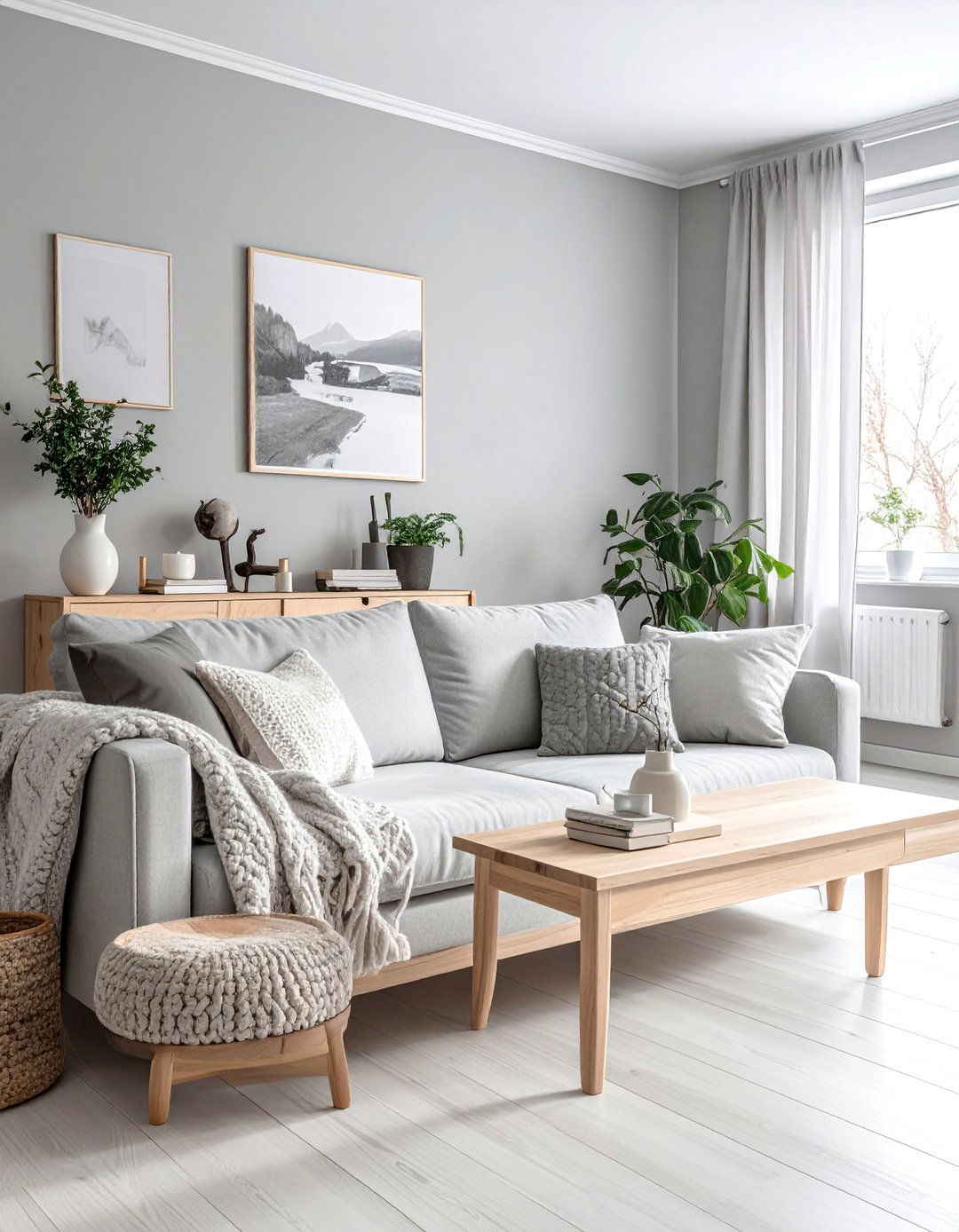
A Scandinavian monochromatic living room design emphasizes simplicity, functionality, and a connection to nature, all within a single color palette. Typically, this style favors light and airy schemes like shades of white, pale gray, or muted beige to maximize natural light. The look is achieved with clean-lined furniture, often made from light-toned woods like ash or pine, which add warmth and texture. Textiles are cozy and natural—think wool throws and linen cushions. The focus is on creating a space that is uncluttered, calming, and highly functional, perfectly capturing the serene and minimalist essence of Scandinavian design principles.
19. Industrial Monochromatic Living Room
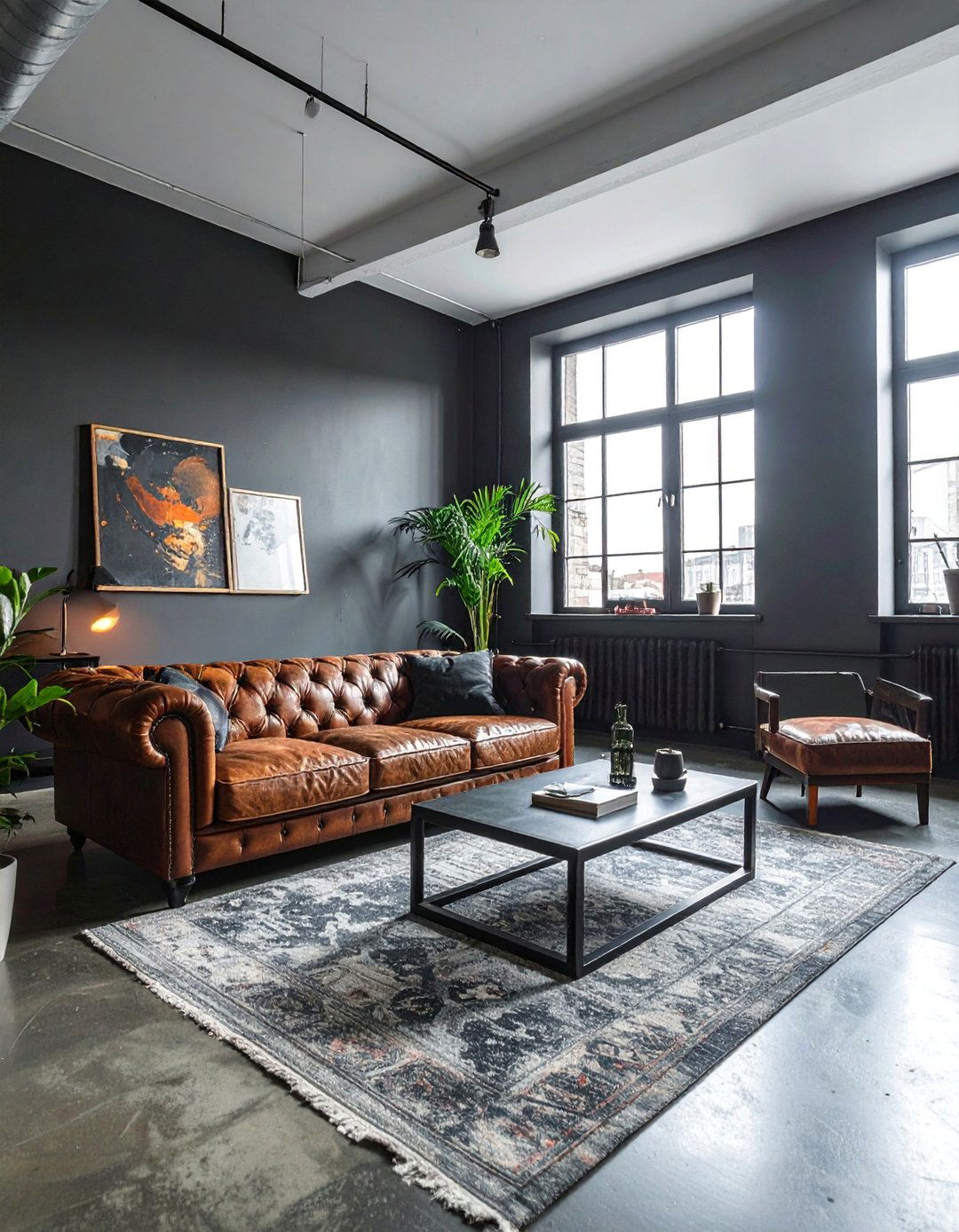
An industrial monochromatic living room combines a single-color palette with raw, utilitarian elements. This style often favors shades of gray, charcoal, or black to complement materials like exposed brick, concrete floors, and metal piping. To create this look, pair a sleek gray sofa with a metal and reclaimed wood coffee table. Leave structural elements exposed to add authentic character. Textures like worn leather and rough-spun linen can soften the hard edges of the industrial features. The result is a space that feels edgy, spacious, and effortlessly cool, celebrating the beauty of raw materials within a cohesive and sophisticated color scheme.
20. Coastal Monochromatic Living Room
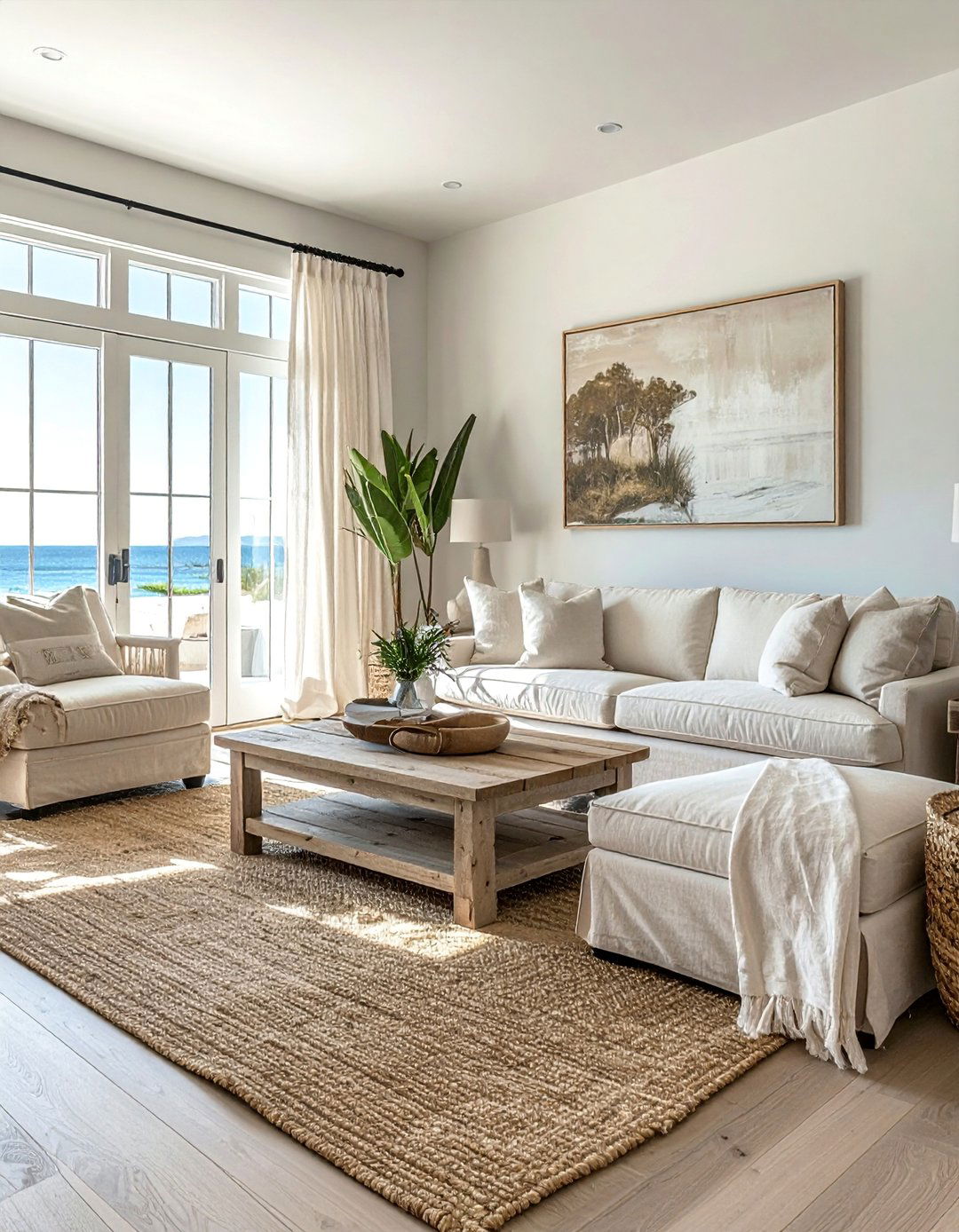
A coastal monochromatic living room captures the breezy, relaxed feeling of the seaside using a single color family. This look is often achieved with shades of sandy beige, soft off-white, or muted sea blue. The key is to evoke a light and airy atmosphere. Use lightweight fabrics like linen for curtains and slipcovers. Incorporate natural textures such as jute, rattan, and weathered wood to add an organic, beach-inspired touch. The goal is to create a serene and uncluttered space that feels calm and restorative, reminiscent of a peaceful day by the ocean, all while maintaining a sophisticated and cohesive monochromatic design.
21. Bohemian Monochromatic Living Room
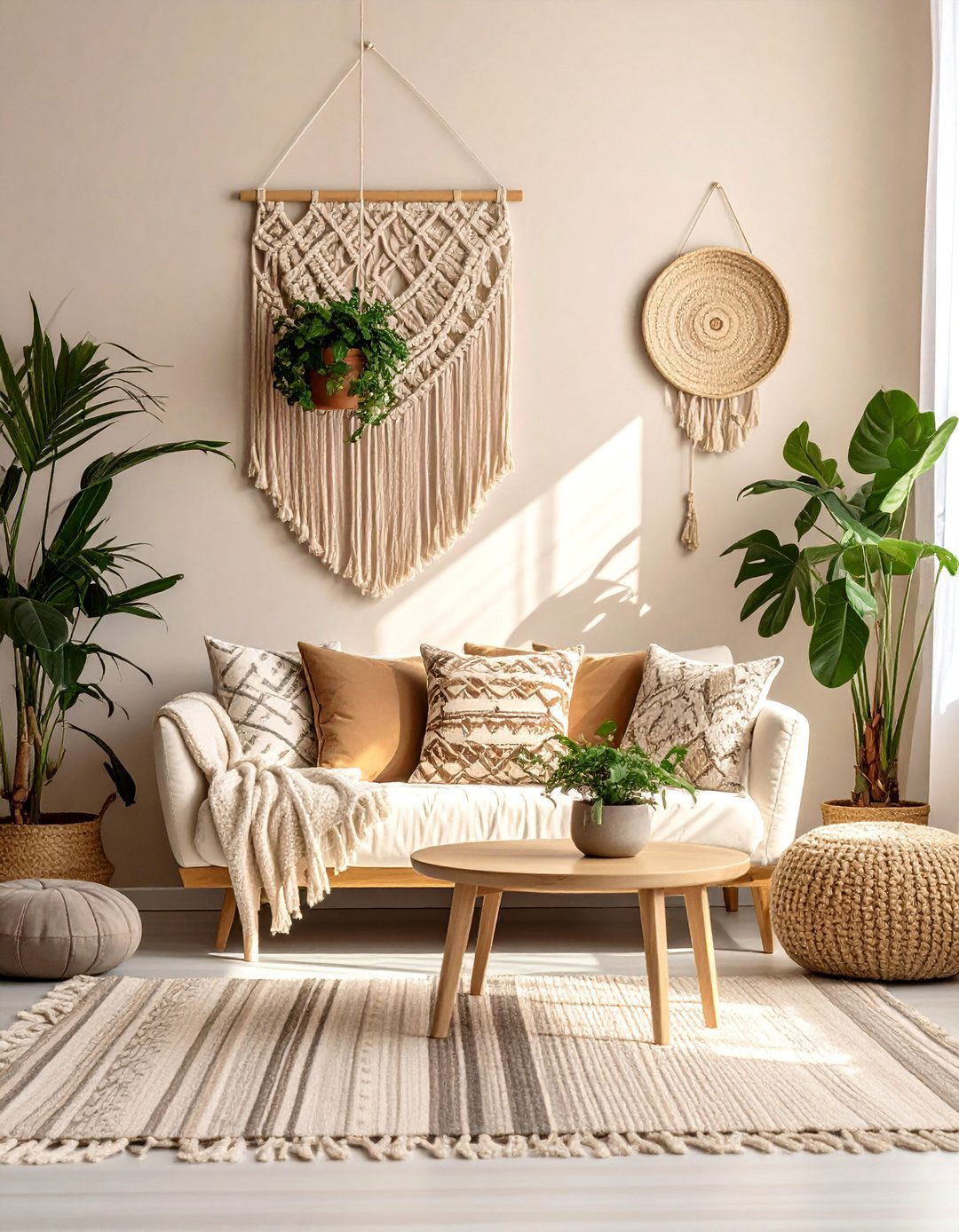
A bohemian monochromatic living room proves that this free-spirited style can be achieved with a disciplined color palette. Choose a warm, earthy base color like cream, terracotta, or taupe, and build upon it with layers of texture and pattern. The bohemian aesthetic shines through in the details: a macramé wall hanging, a variety of patterned cushions in the same color family, fringed throws, and an abundance of houseplants. Natural materials like rattan furniture and a jute rug are essential. This approach creates a space that feels eclectic and personal yet harmonious and serene, blending boho charm with monochromatic sophistication.
22. Monochromatic Living Room with Statement Art
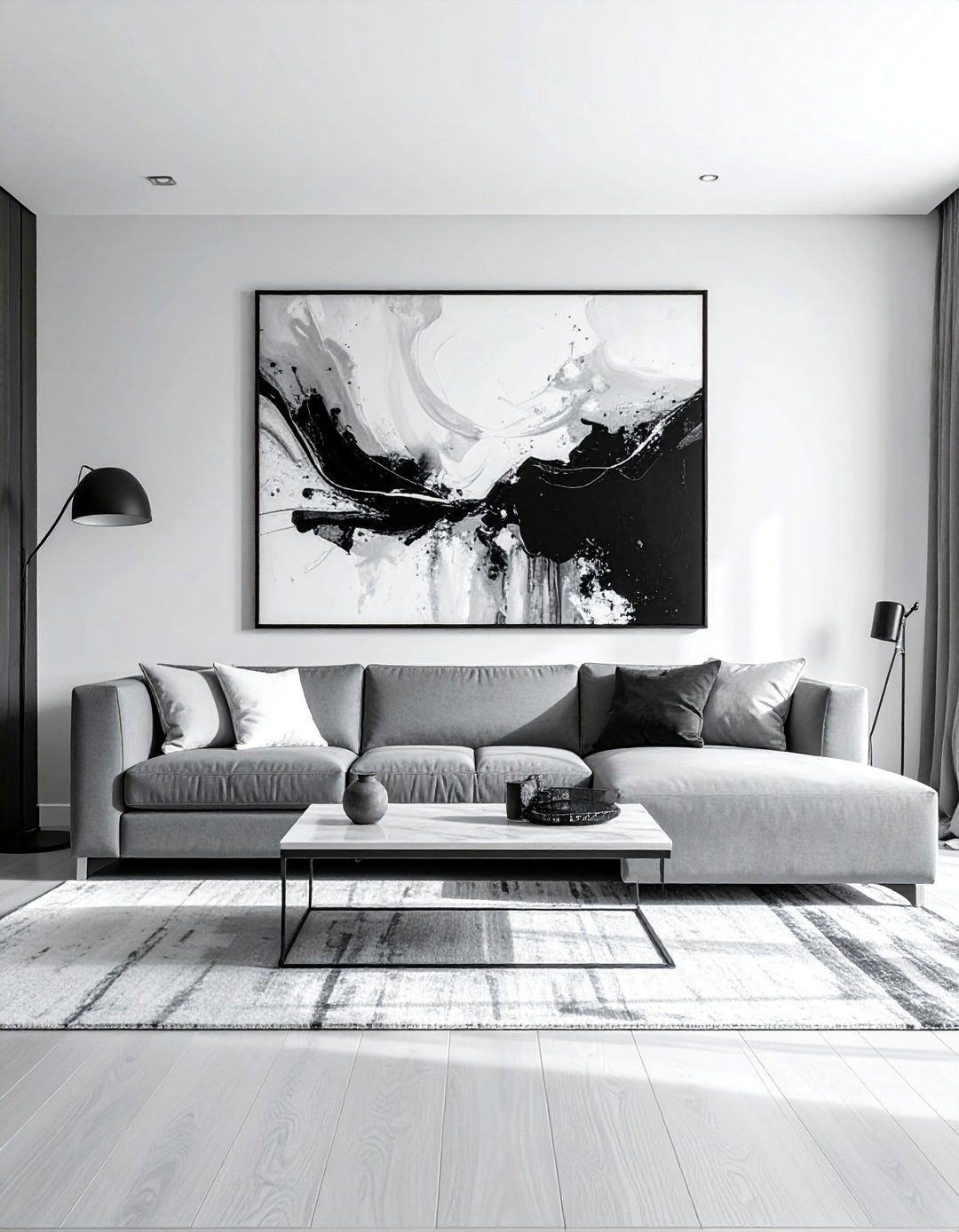
Using statement art is a fantastic way to create a focal point in a monochromatic living room. Select a large-scale piece of artwork that adheres to the room's single-color palette. For instance, in an all-gray room, a powerful black-and-white photograph or an abstract painting with varying shades of gray can add immense visual impact without disrupting the color scheme. The artwork provides a point of interest and can introduce subtle new textures or patterns. This strategy allows the art to stand out for its composition and form rather than its color, adding a layer of sophistication and personal expression to the space.
23. Monochromatic Living Room with Layered Lighting
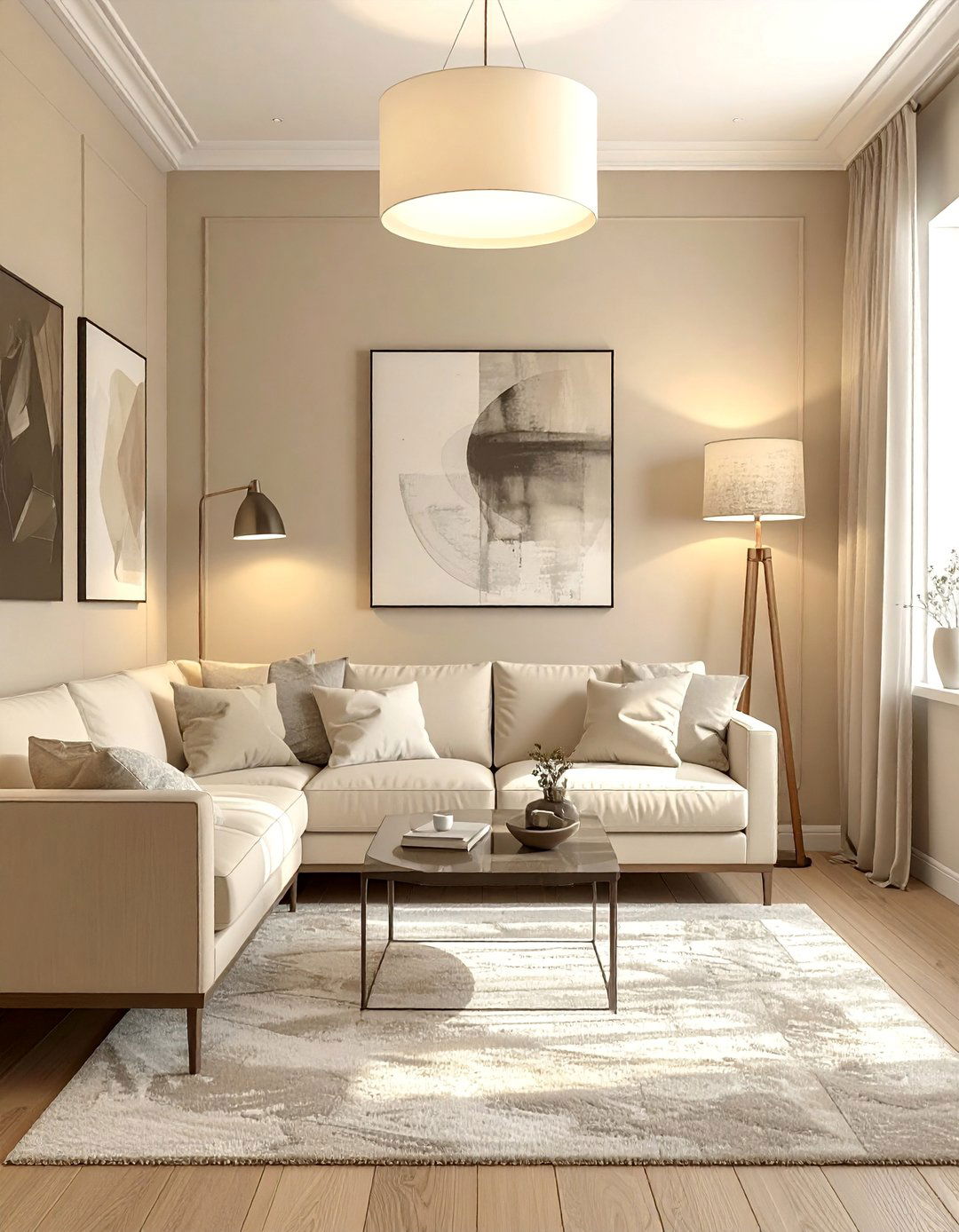
Layered lighting is crucial in a monochromatic living room to highlight its different tones and textures. A single overhead light can make the space feel flat, so it's important to use multiple light sources. Start with ambient lighting from a central fixture or recessed lights. Add task lighting with floor lamps or table lamps for reading. Finally, incorporate accent lighting to draw attention to architectural features or artwork. Using dimmers allows you to adjust the mood. This strategic combination of light sources will create depth, prevent shadows in corners, and bring the subtle variations of your monochromatic color scheme to life.
24. Dark Green Monochromatic Living Room
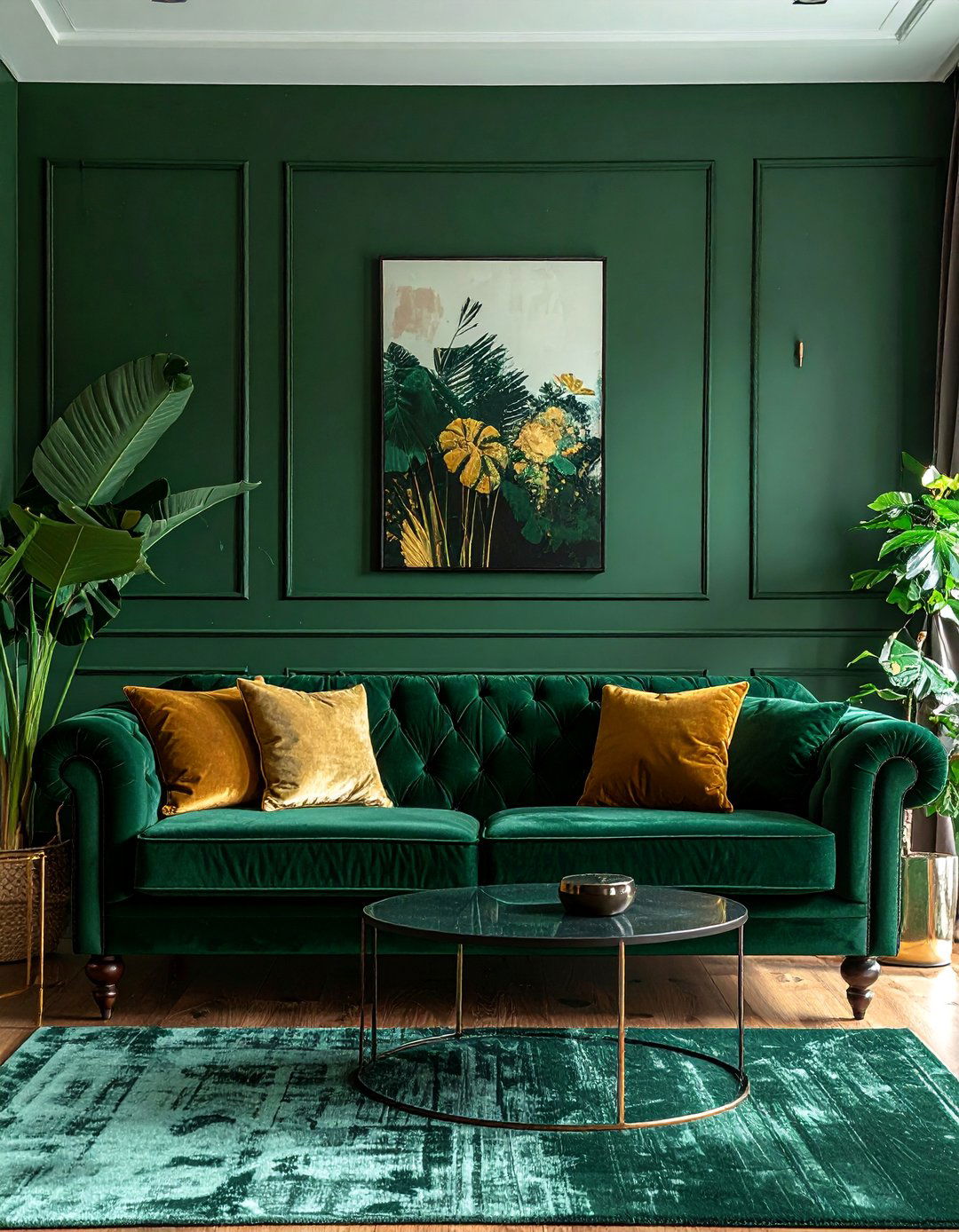
A dark green monochromatic living room creates a space that is moody, enveloping, and deeply sophisticated. Drawing inspiration from lush forests, this design uses shades like emerald, hunter, and deep olive to craft a dramatic yet calming atmosphere. Paint the walls in a rich, dark green and choose a sofa in a complementary velvet fabric. To prevent the space from feeling too heavy, introduce lighter green accents through cushions and decor. Metallic details in brass or gold add a touch of warmth and luxury, while natural wood elements can ground the design. This bold choice results in a cozy, intimate sanctuary with a strong connection to nature.
25. Monochromatic Living Room with Architectural Details
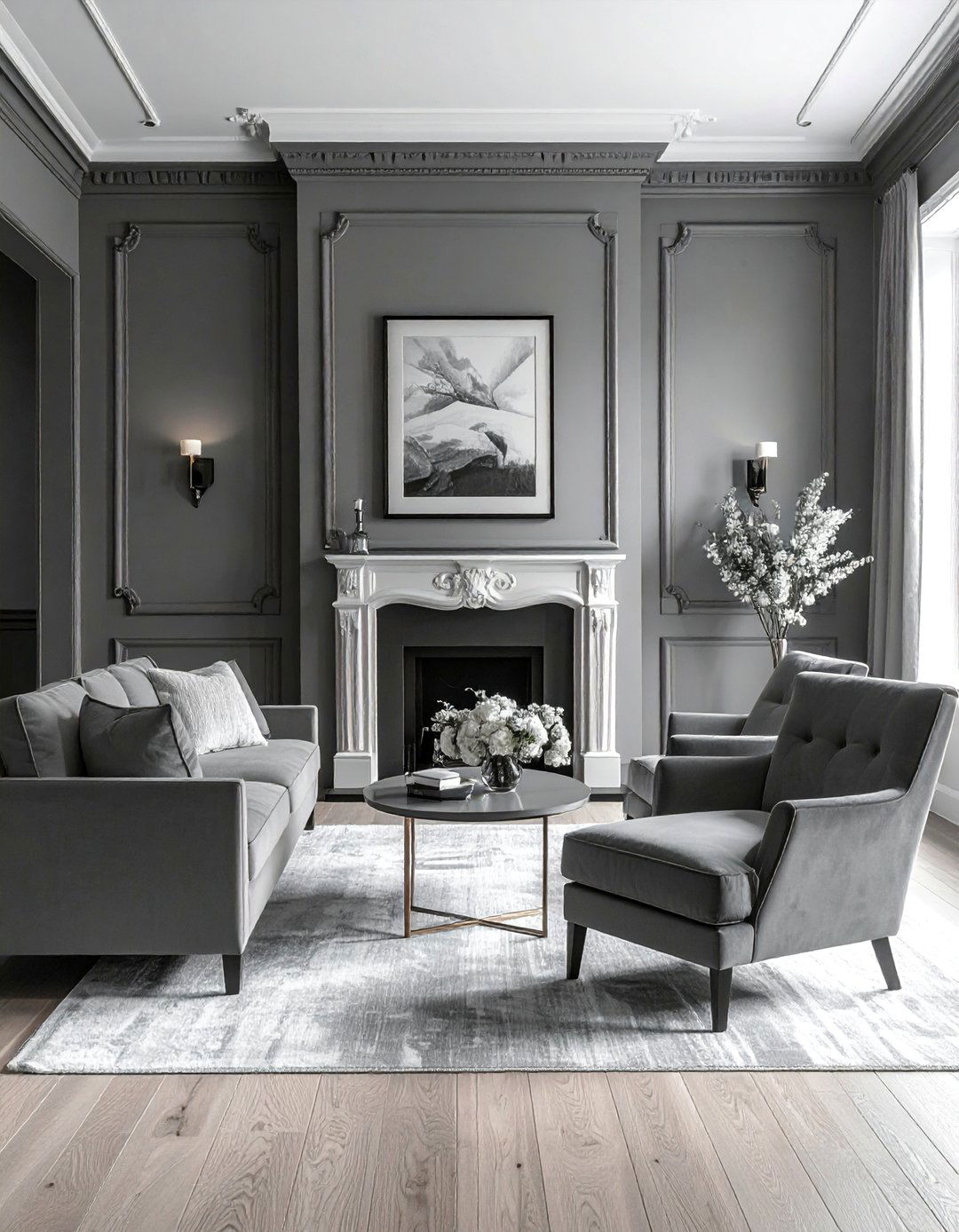
Highlighting architectural details is a key benefit of a monochromatic living room design. When the walls, trim, and ceiling are all painted in shades of the same color, features like crown molding, built-in shelving, or an ornate fireplace mantel stand out through their form and shadow rather than color contrast. This technique creates a sophisticated and cohesive look that emphasizes the room's character. Painting these details in a slightly lighter or darker tint than the walls can add subtle dimension while maintaining the overall monochromatic feel. This approach turns the room's inherent structure into a primary decorative element, adding elegance and depth.
Conclusion:
A monochromatic living room offers a timeless and sophisticated approach to interior design. By focusing on a single color family and layering various shades, tones, and textures, you can create a space that is harmonious, visually interesting, and deeply personal. From airy whites and calming grays to bold navy and rich greens, this design strategy is incredibly versatile and adaptable to any style. The key to success lies in the thoughtful combination of materials, lighting, and decor to build depth and prevent monotony, resulting in a cohesive and elegant living space that feels both intentional and inviting.

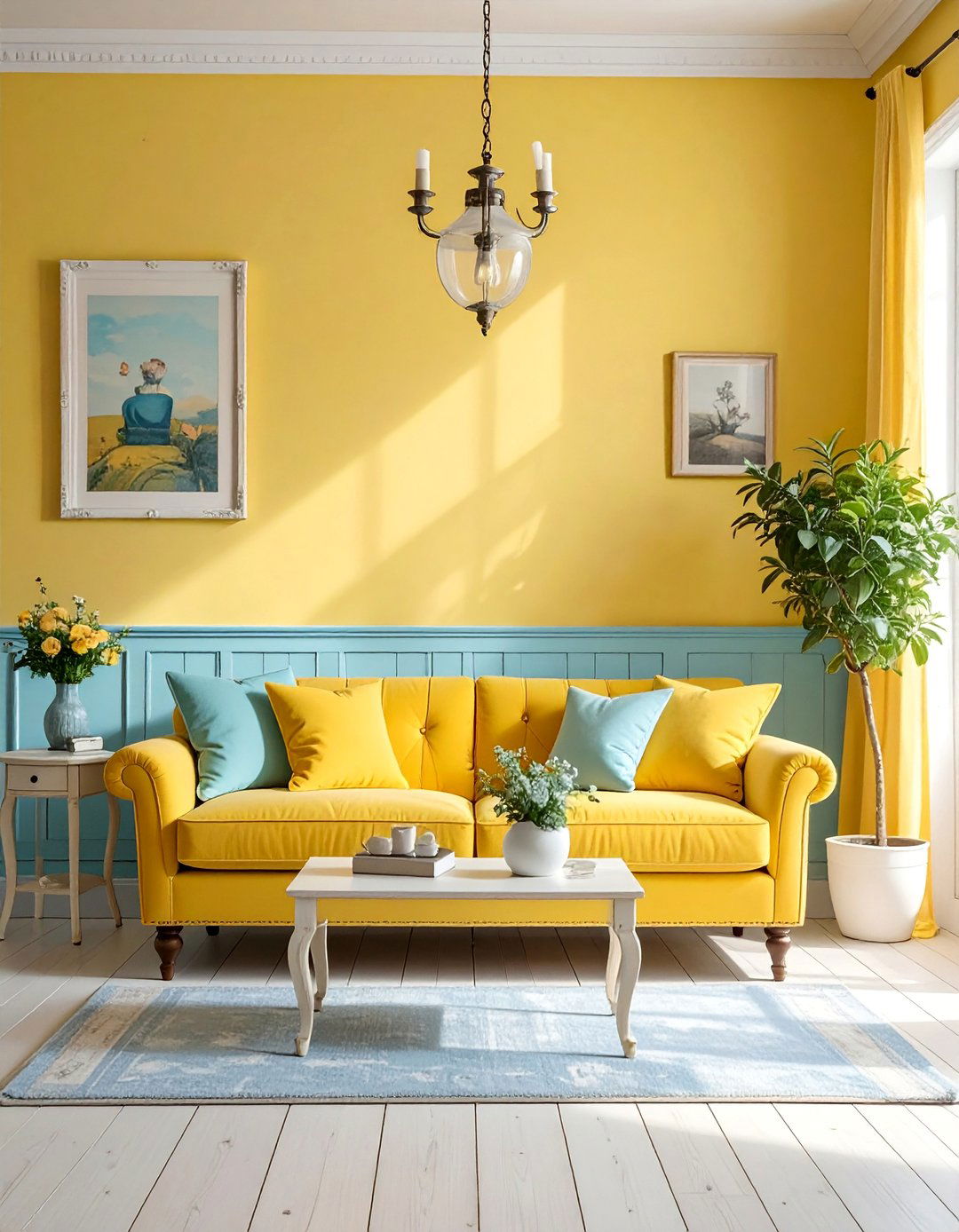
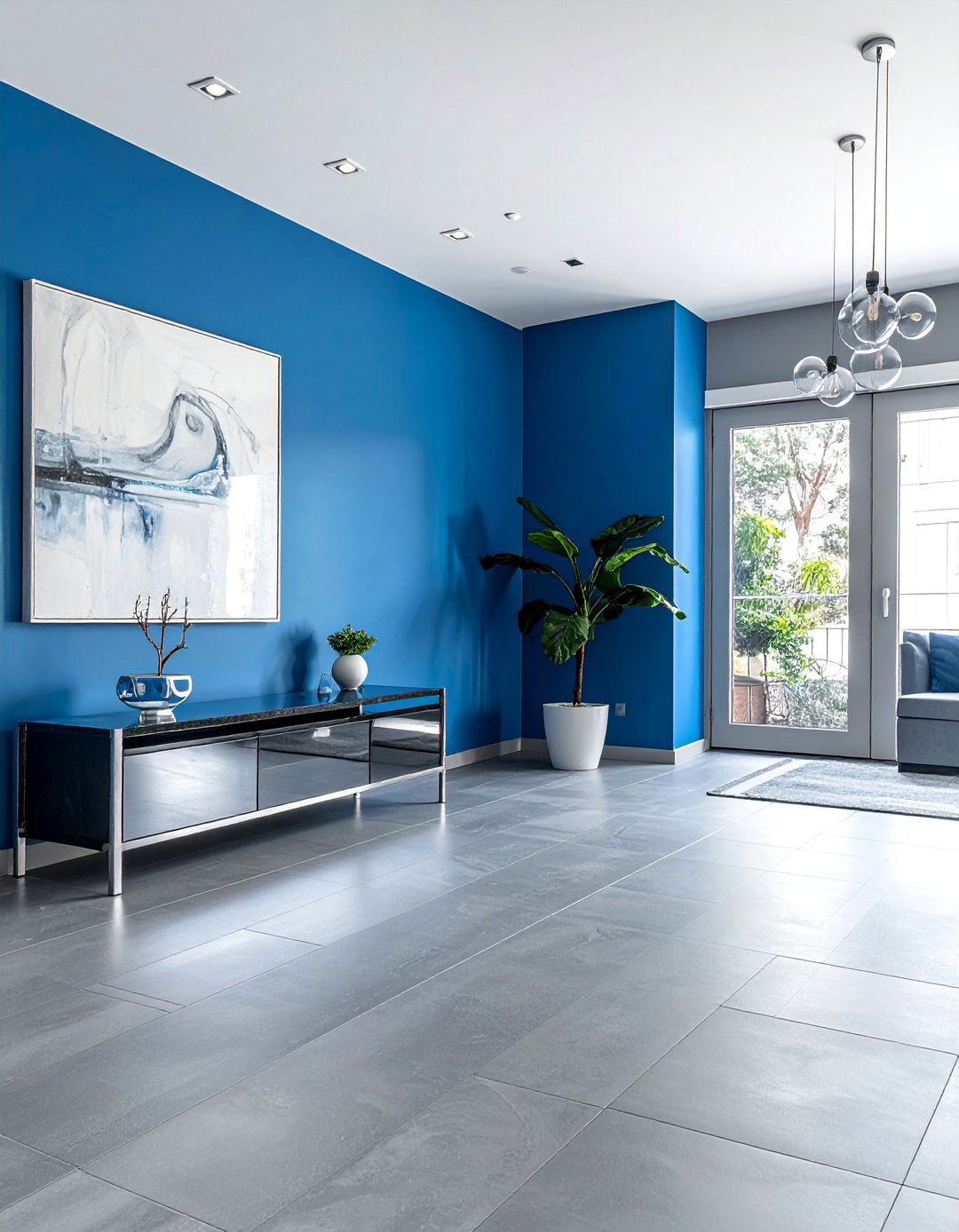
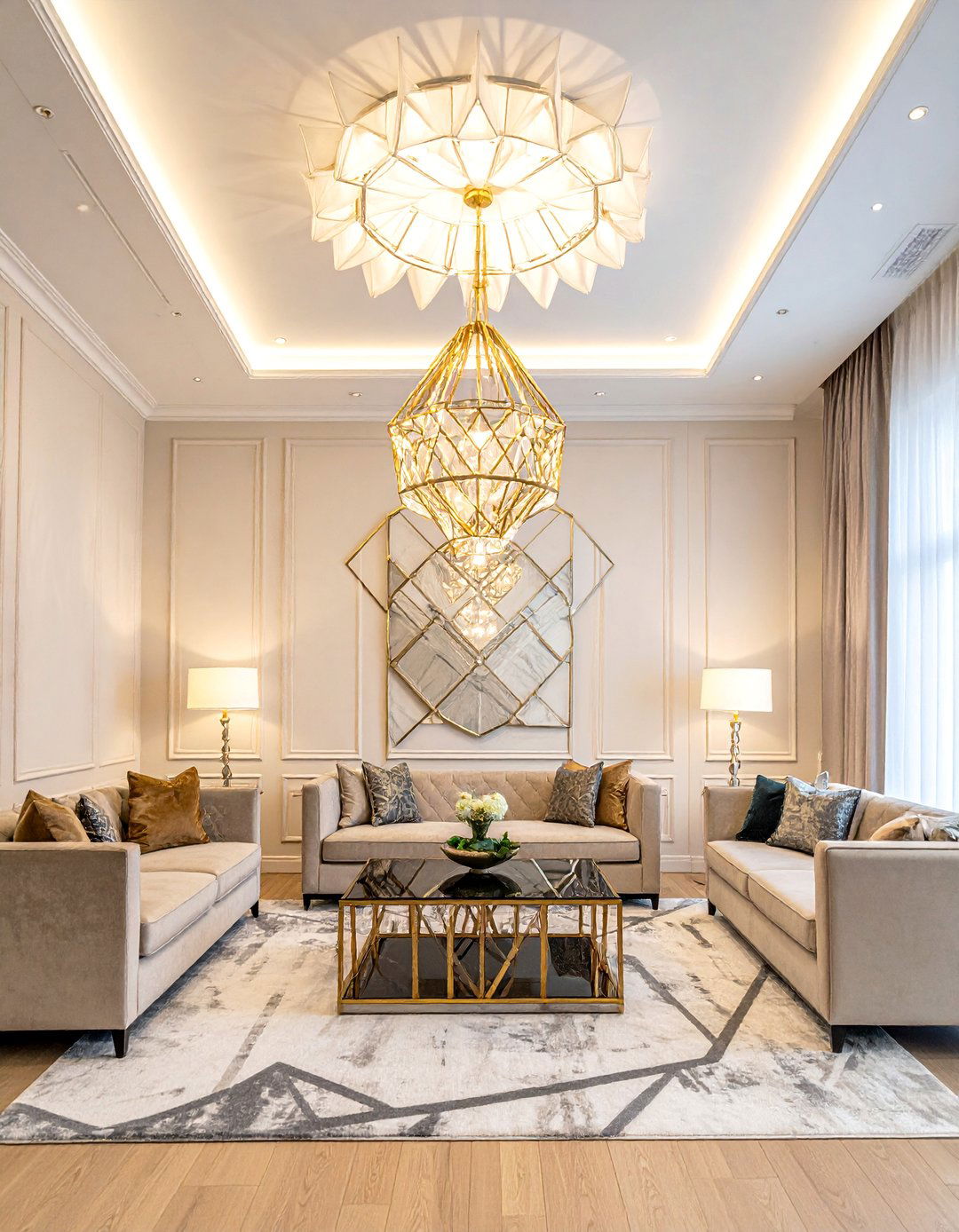
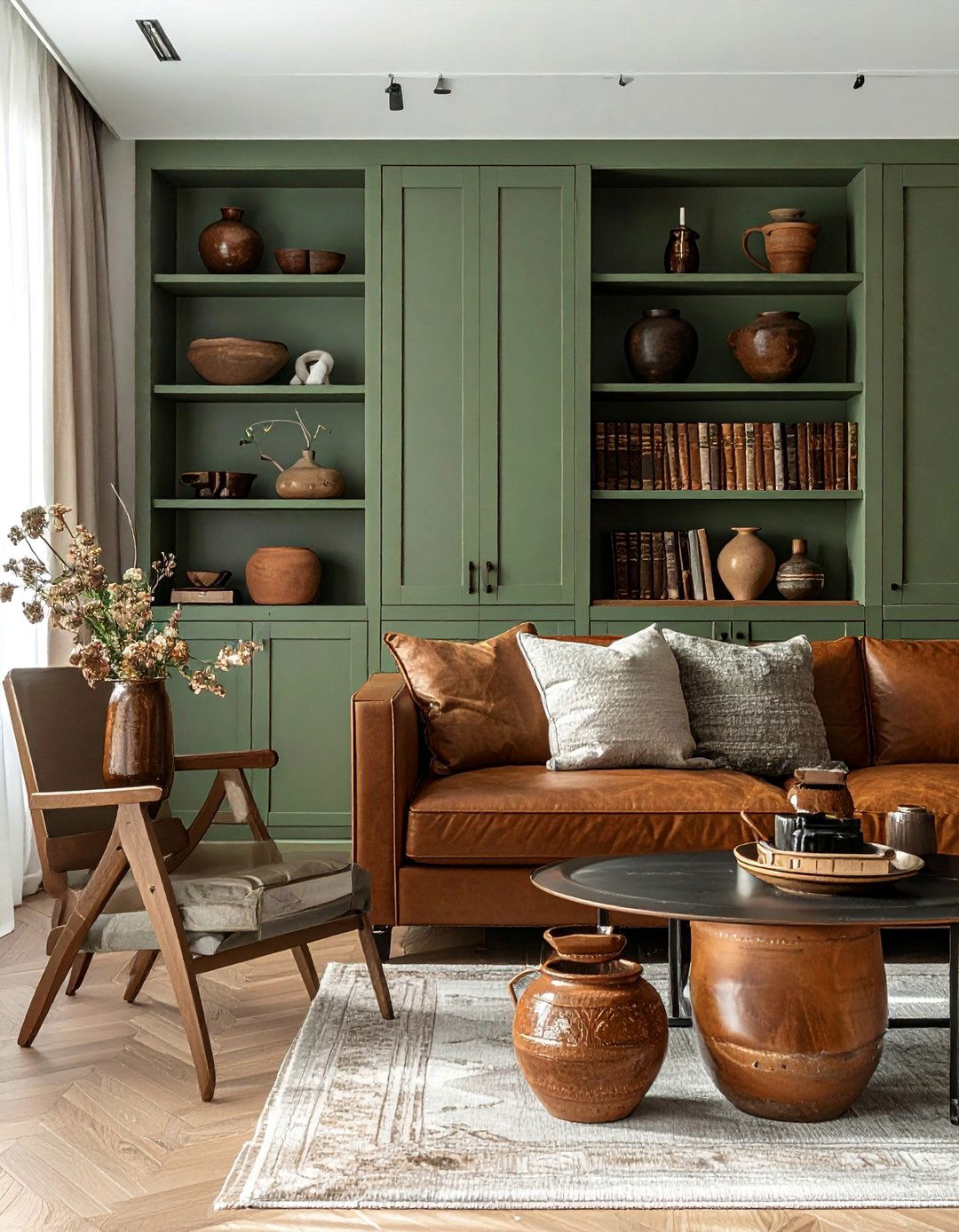
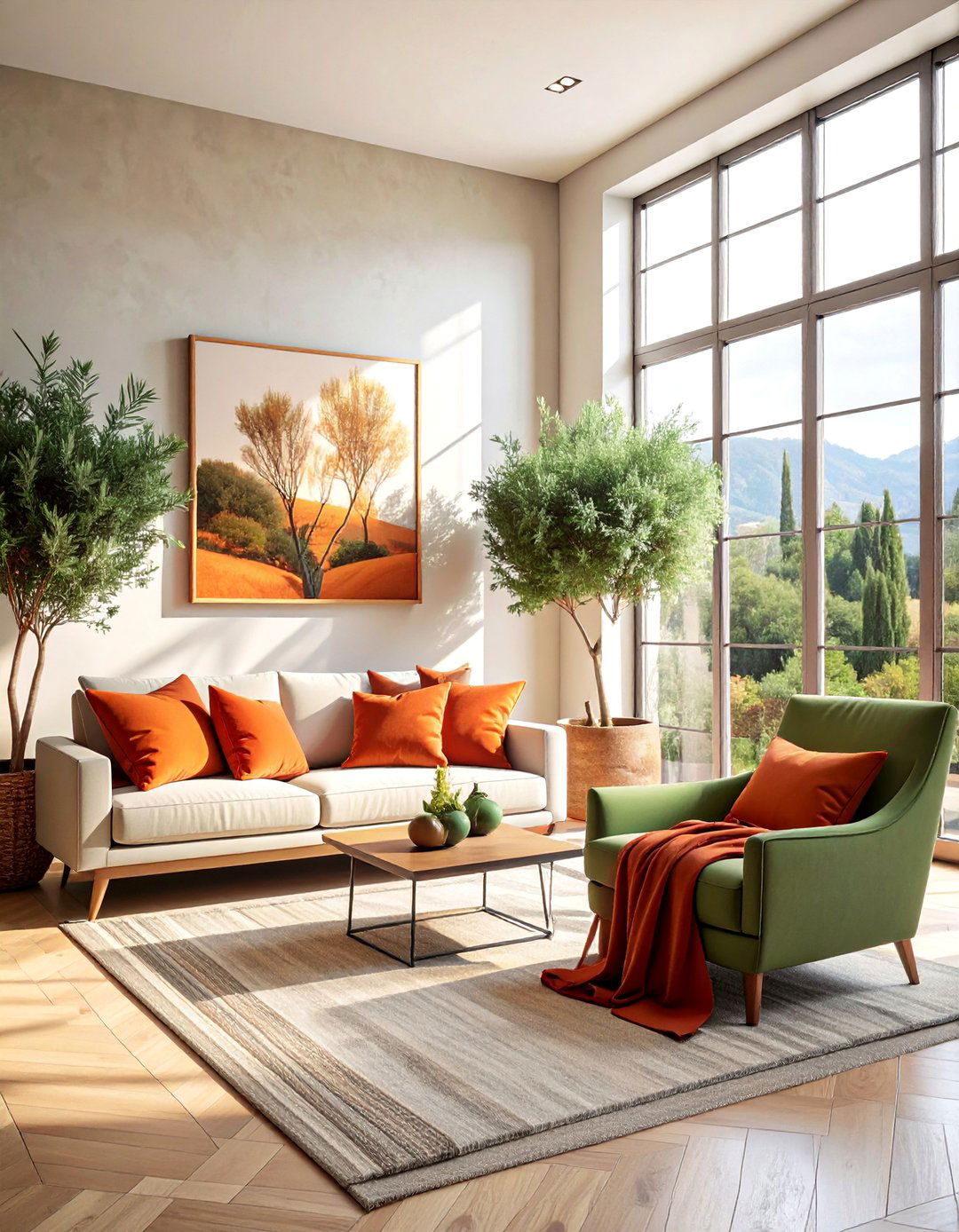
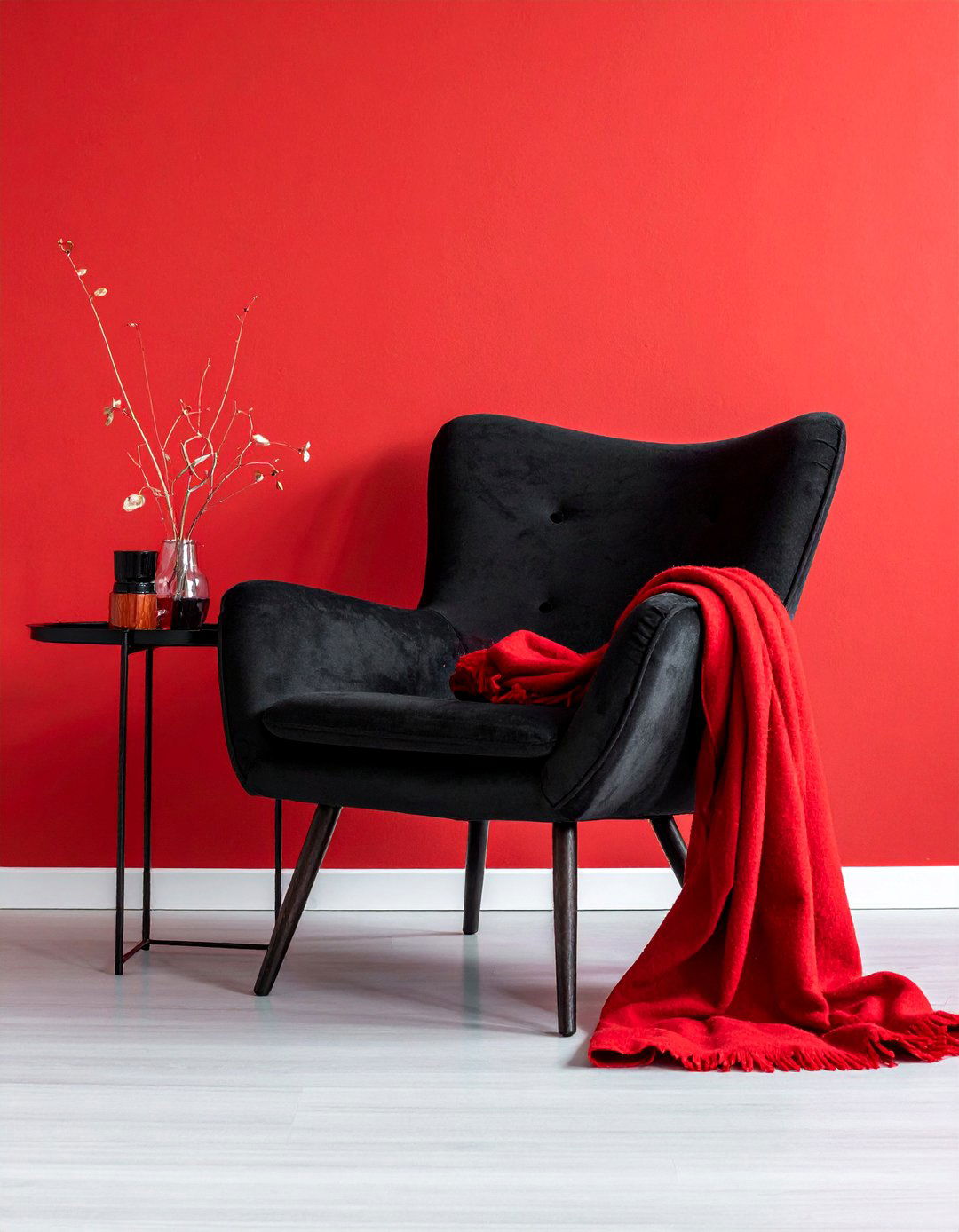
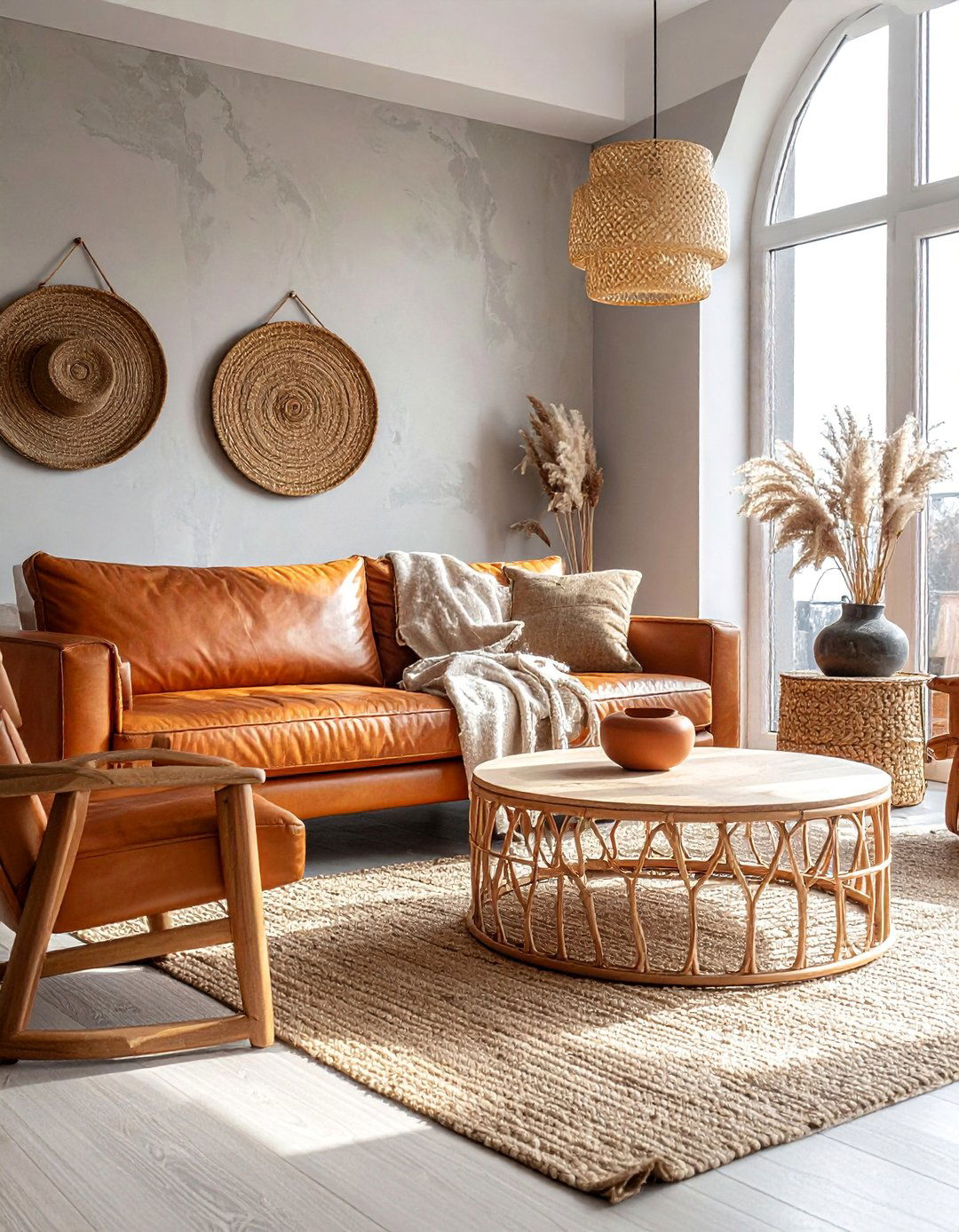
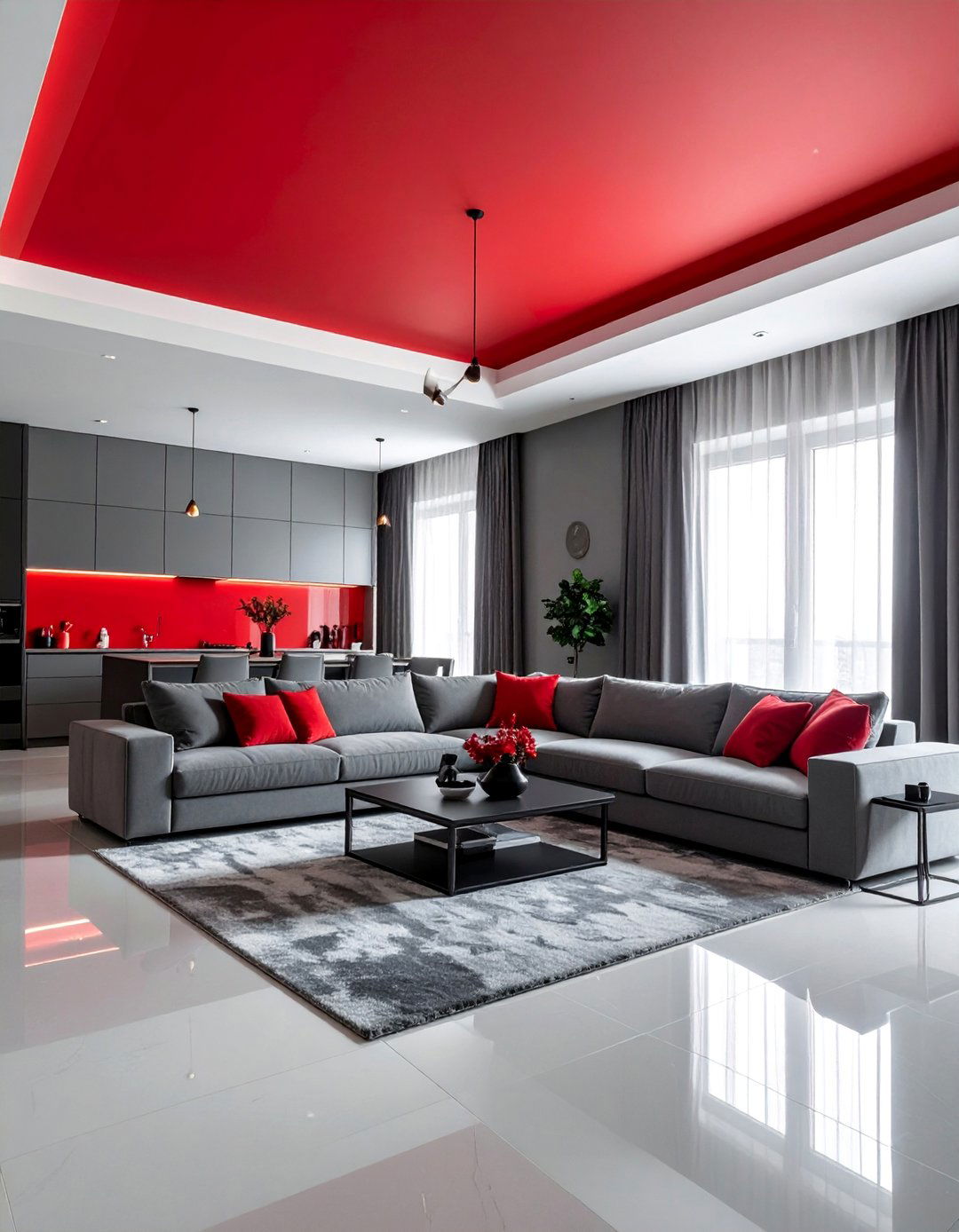
Leave a Reply